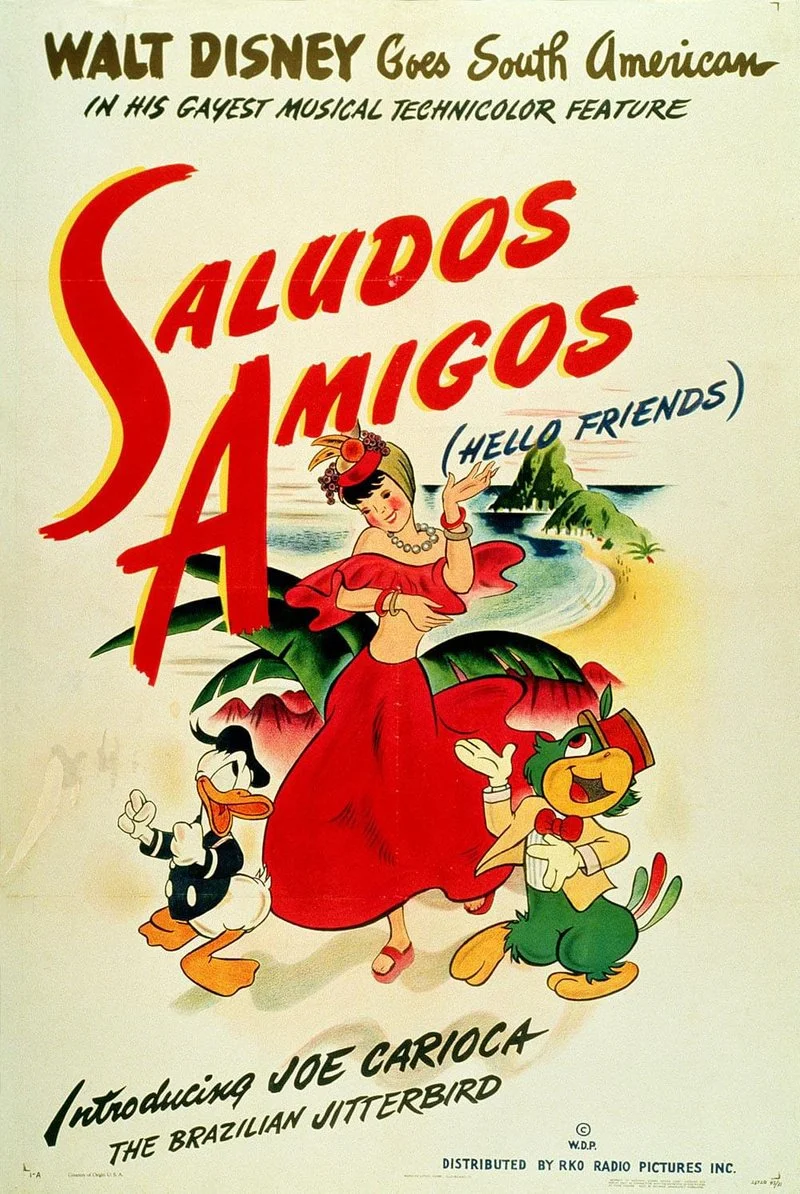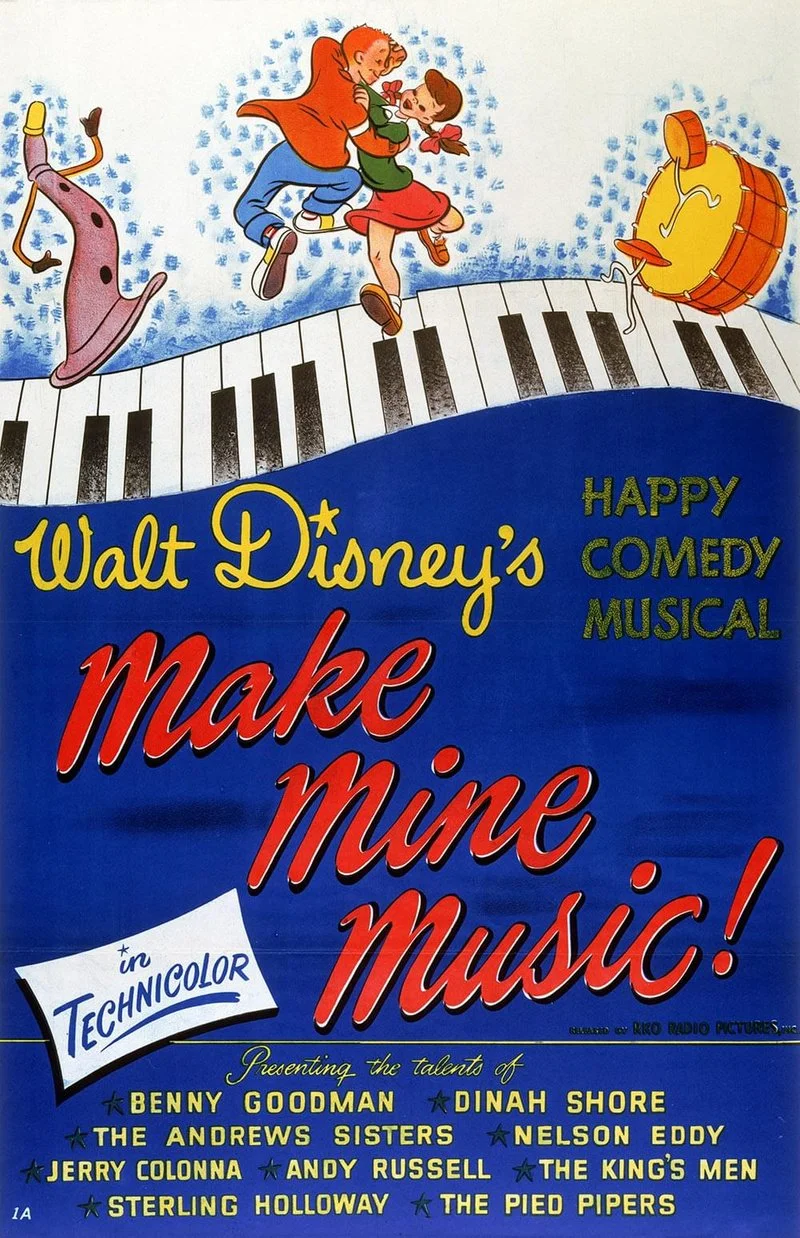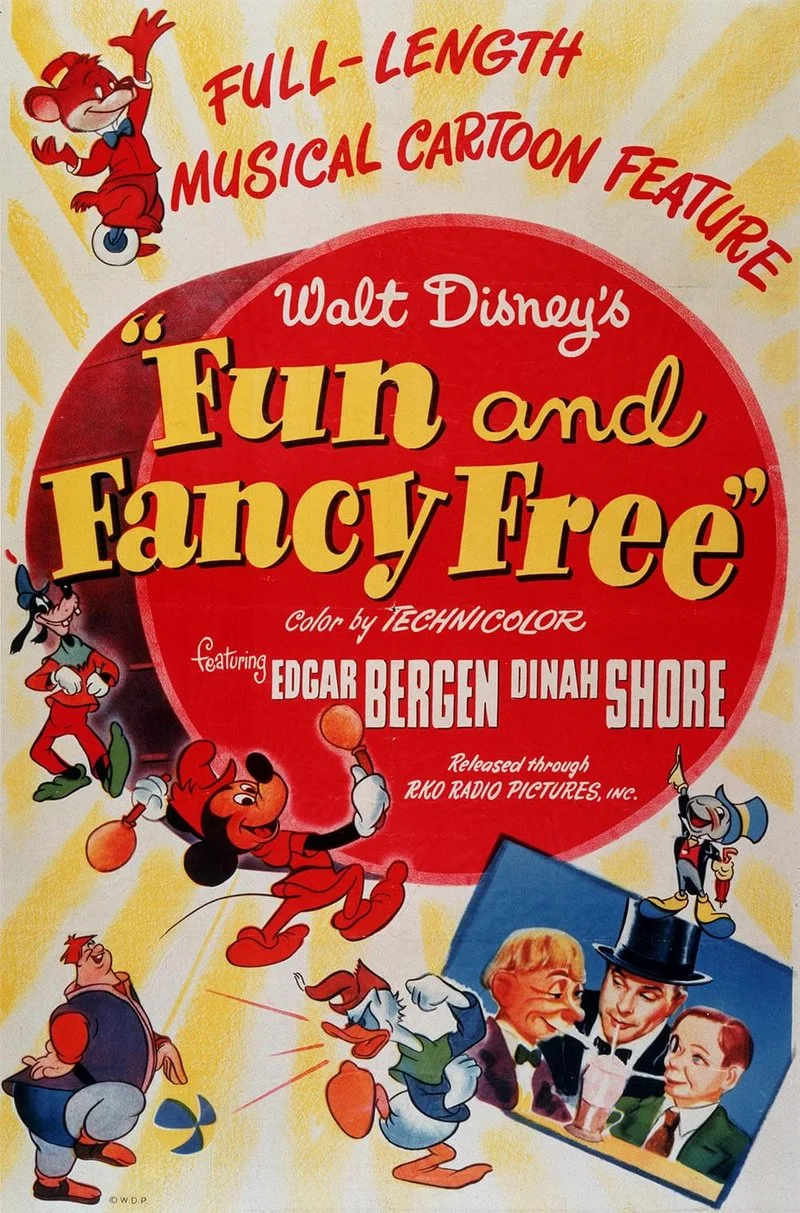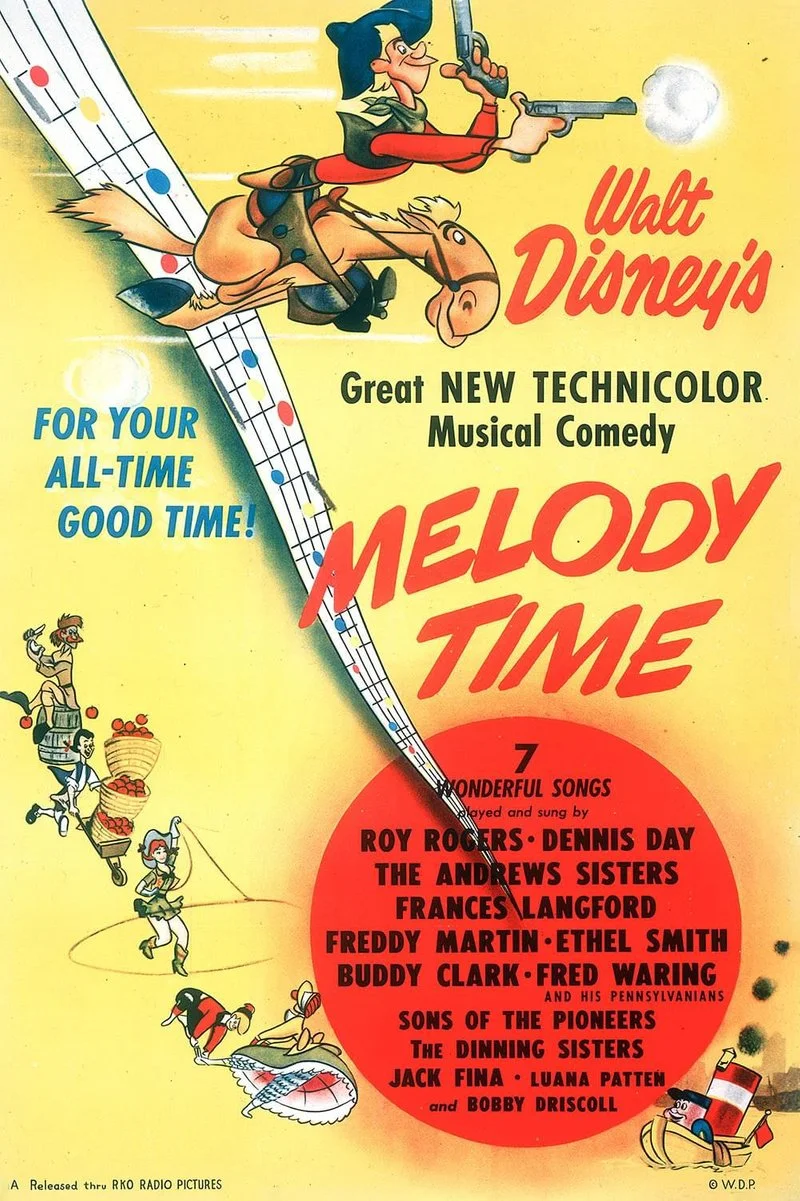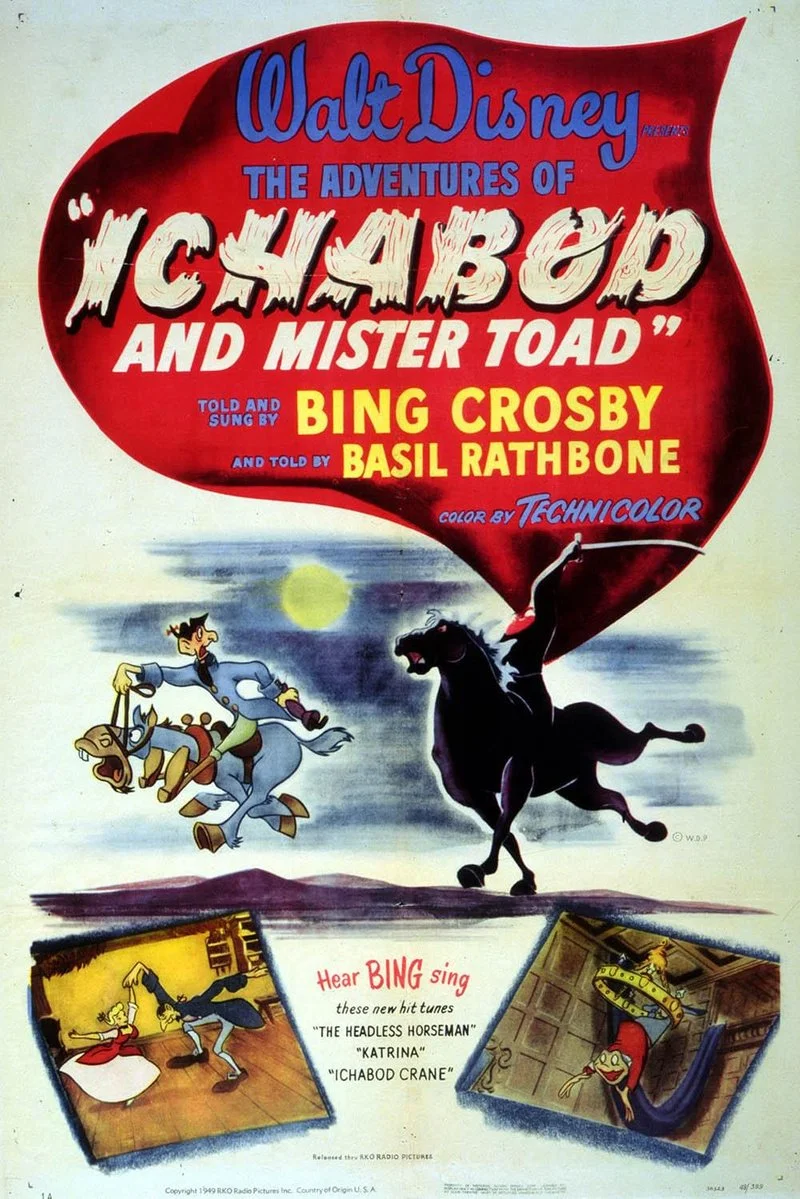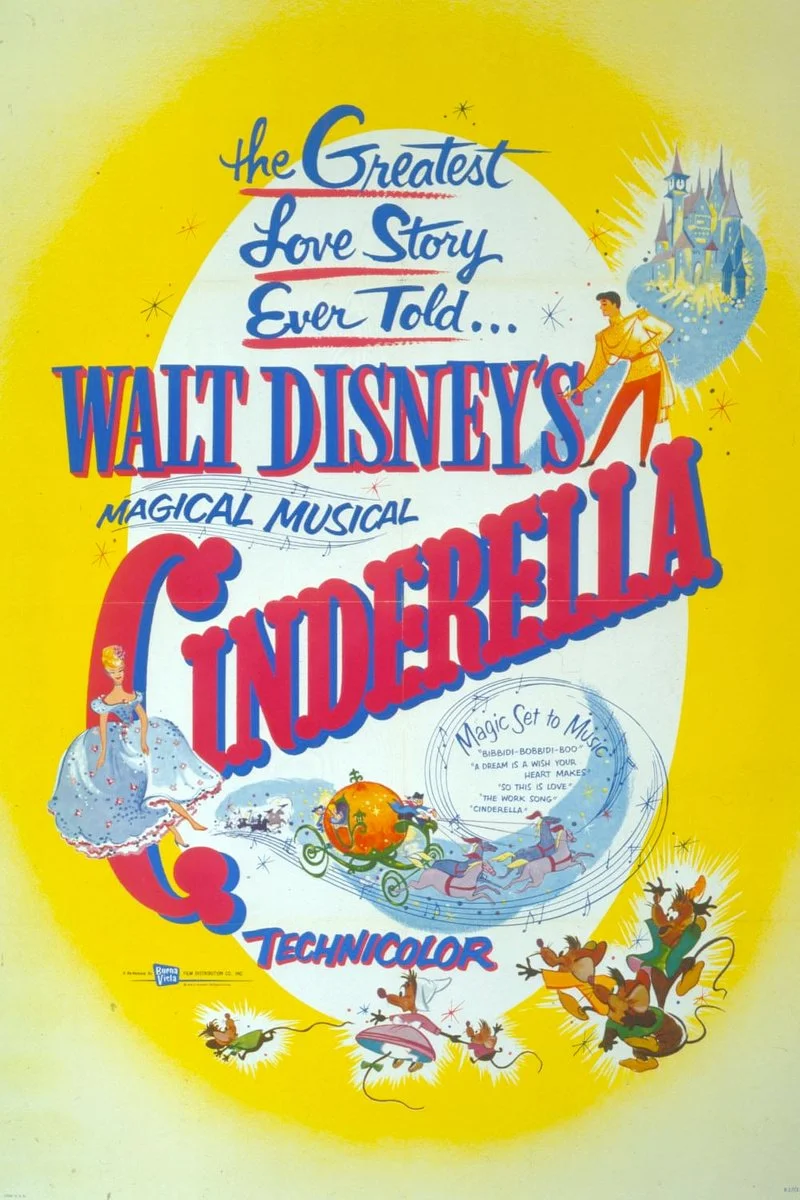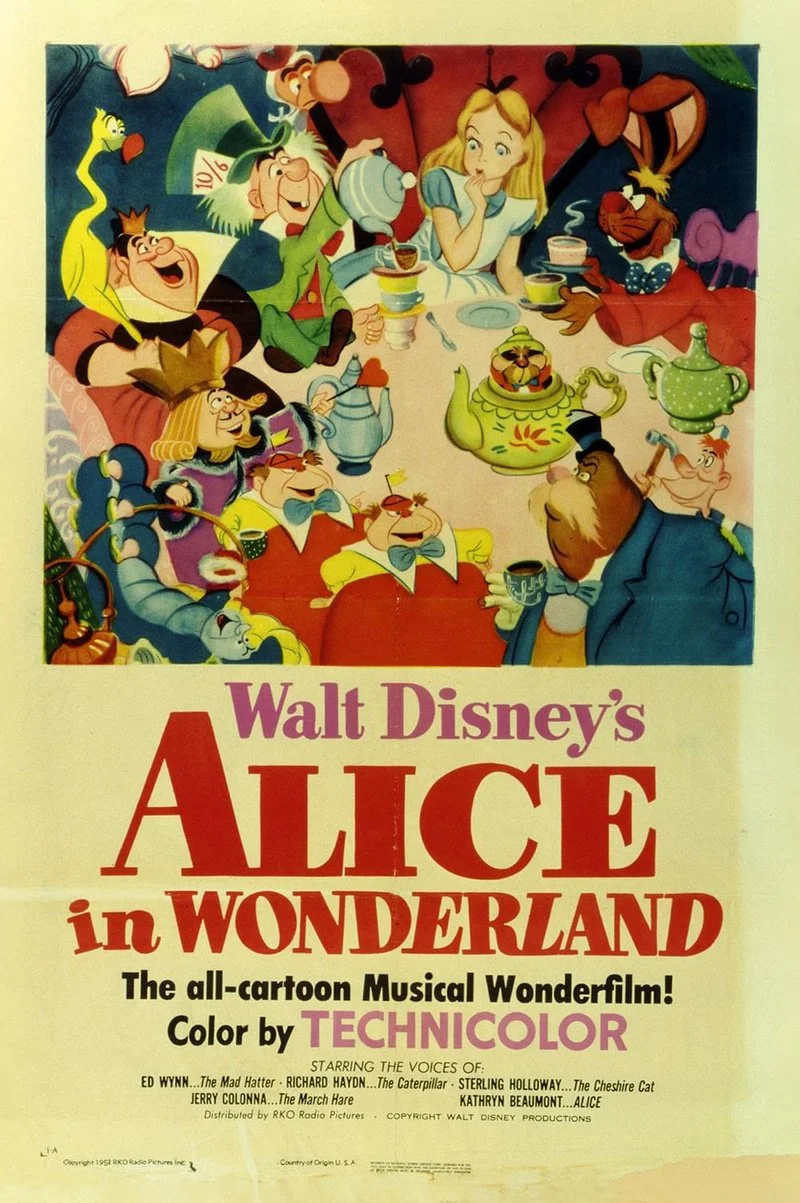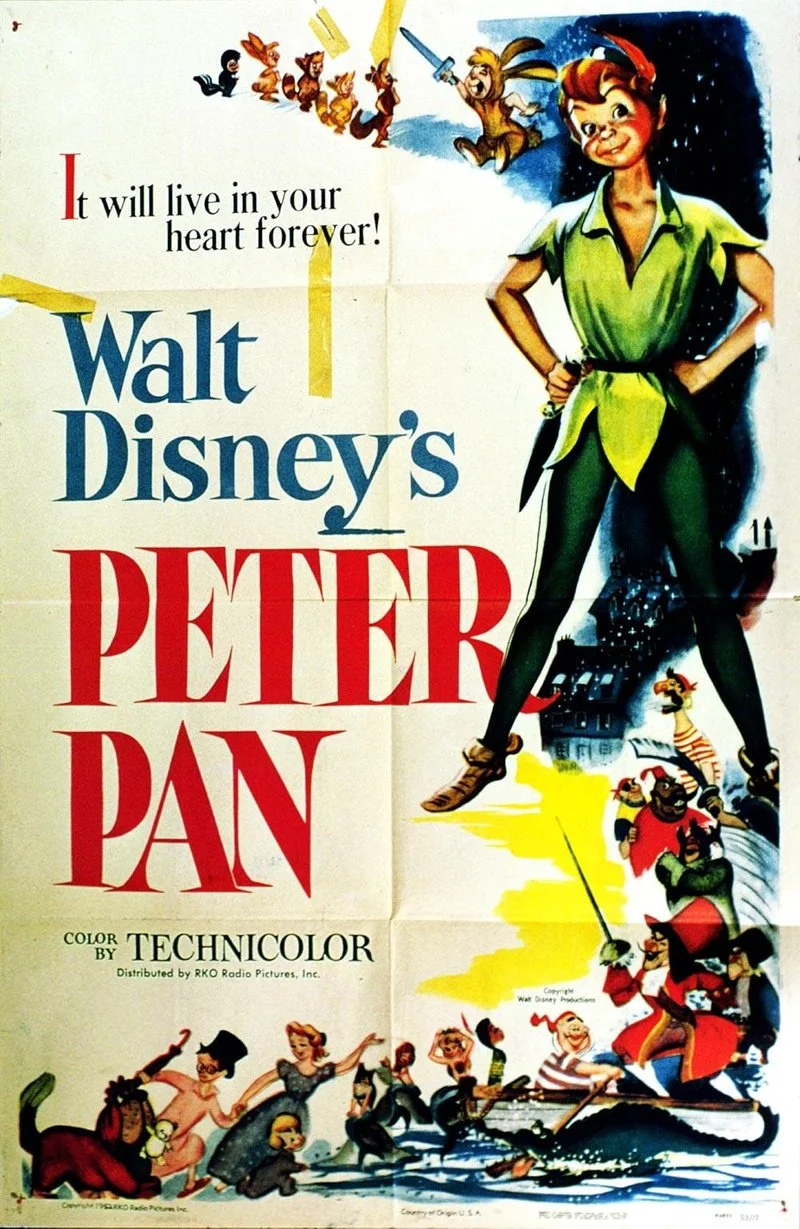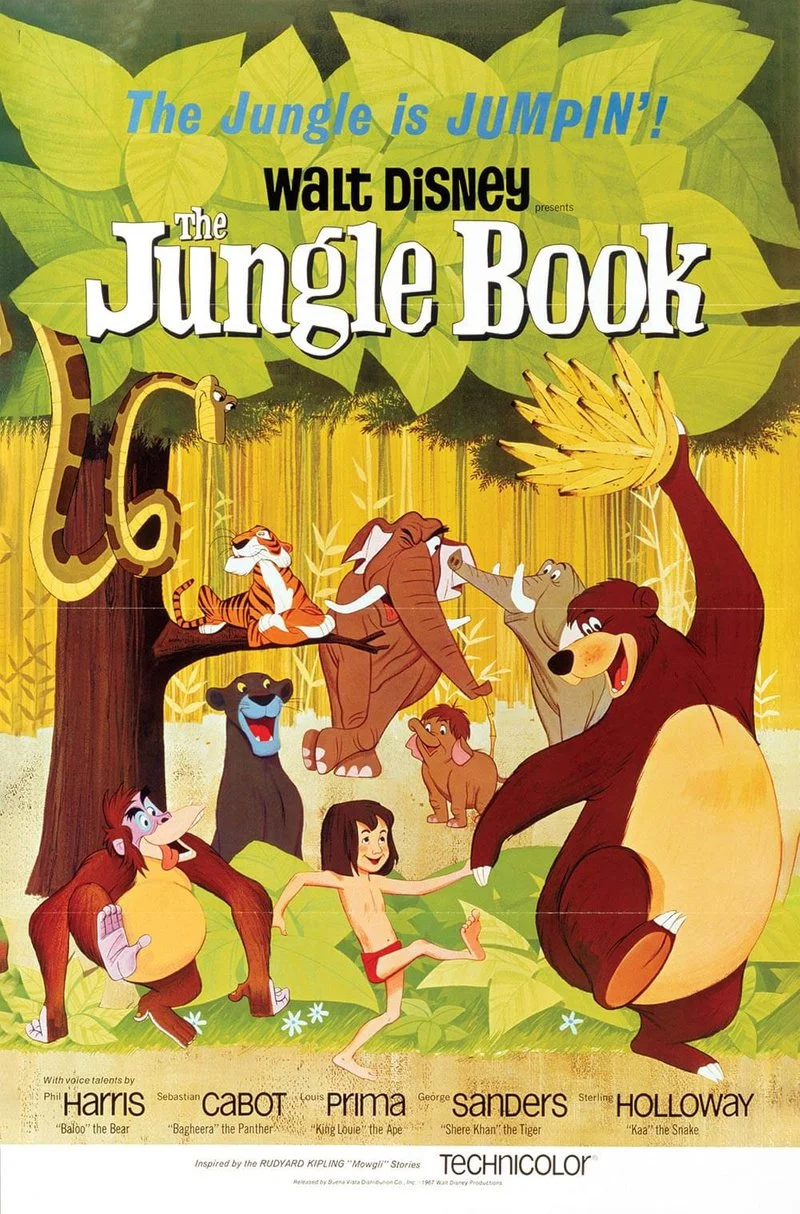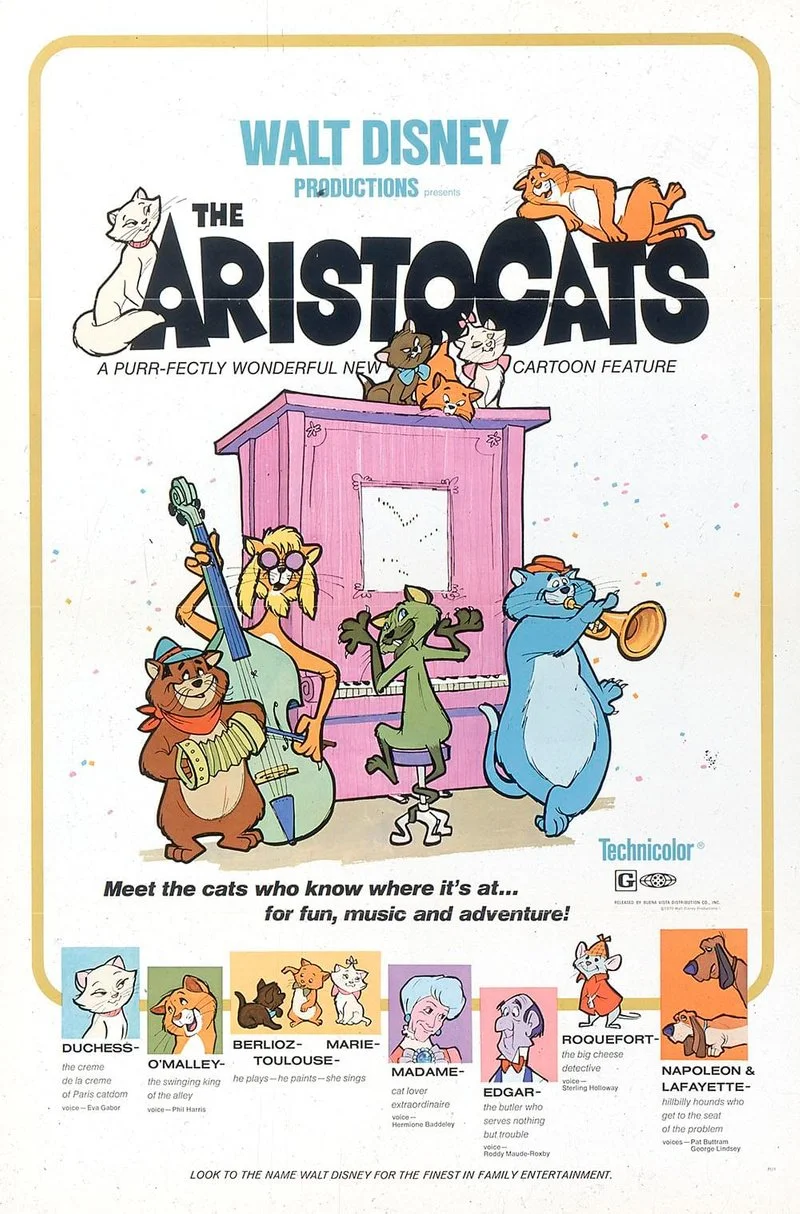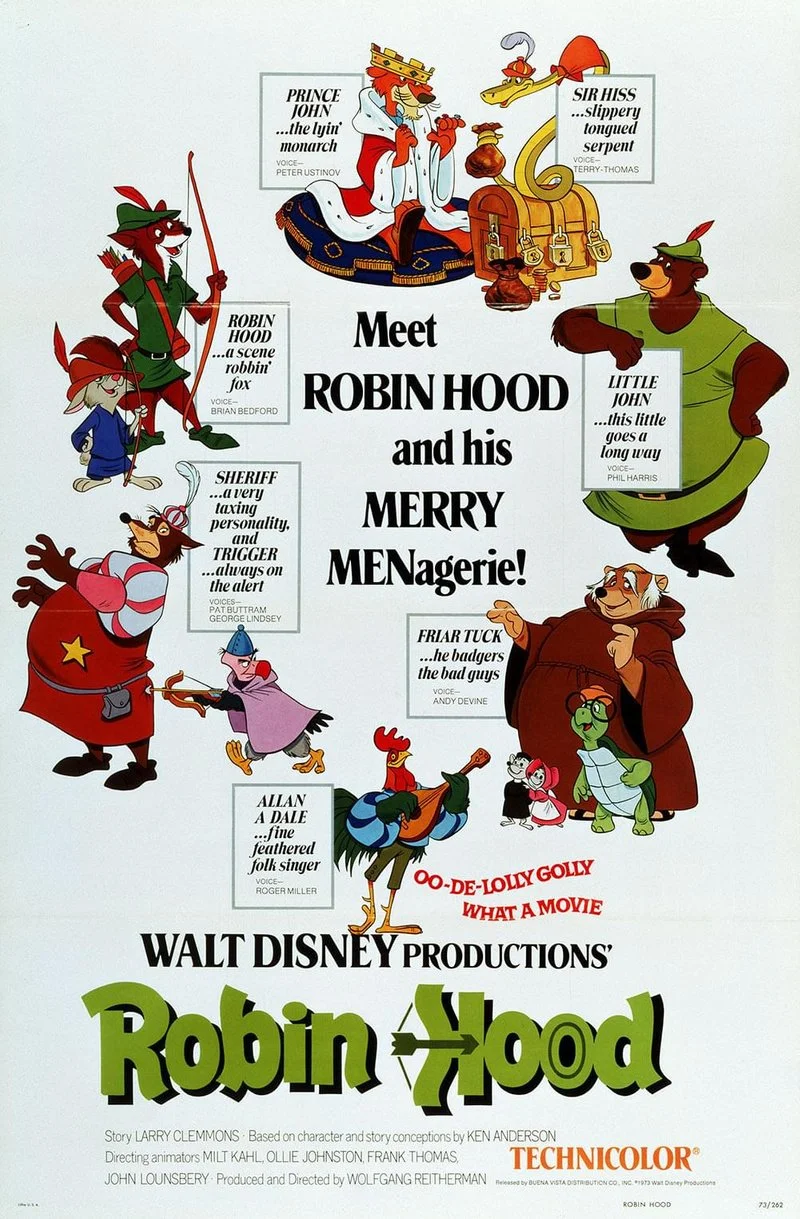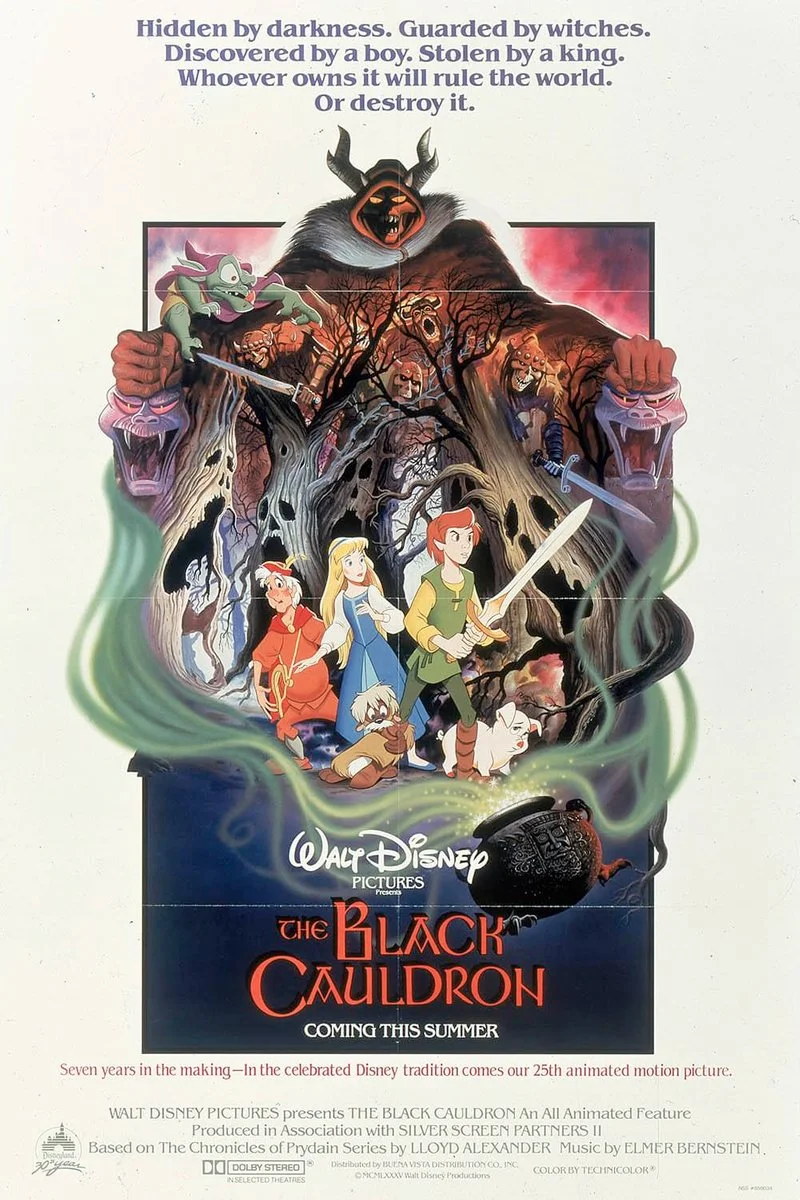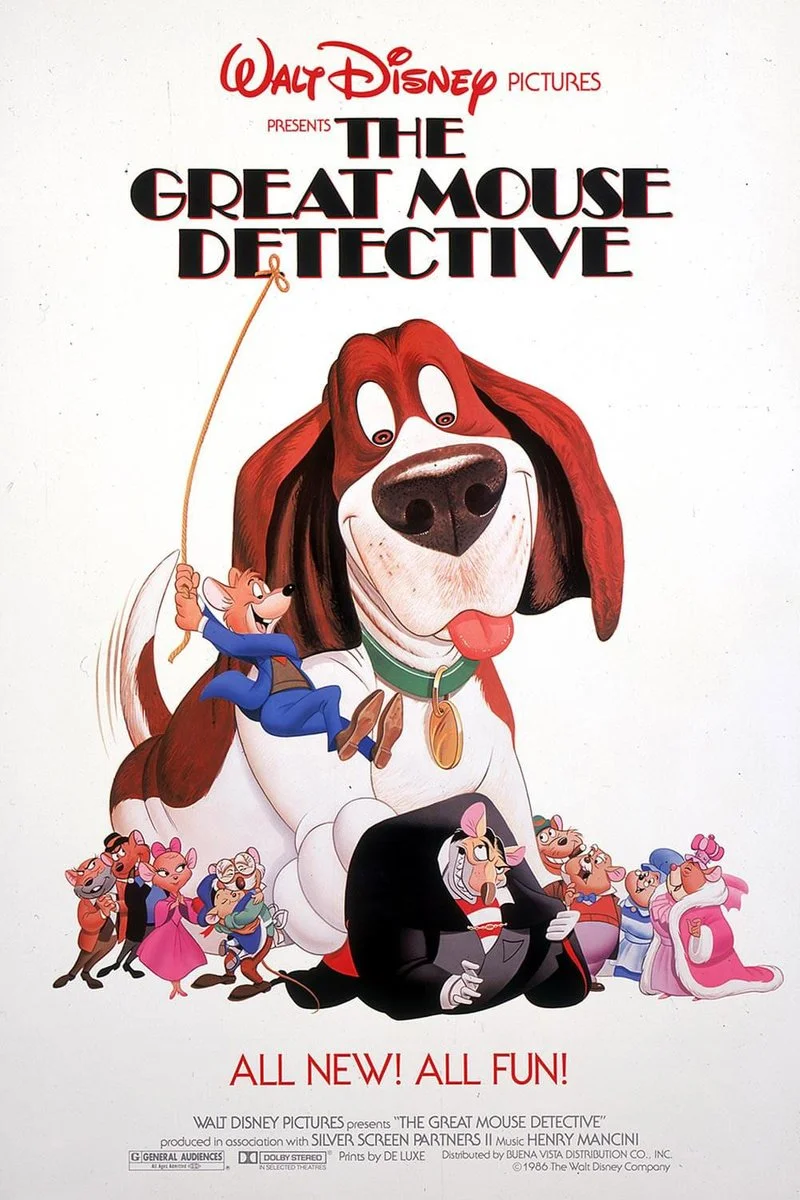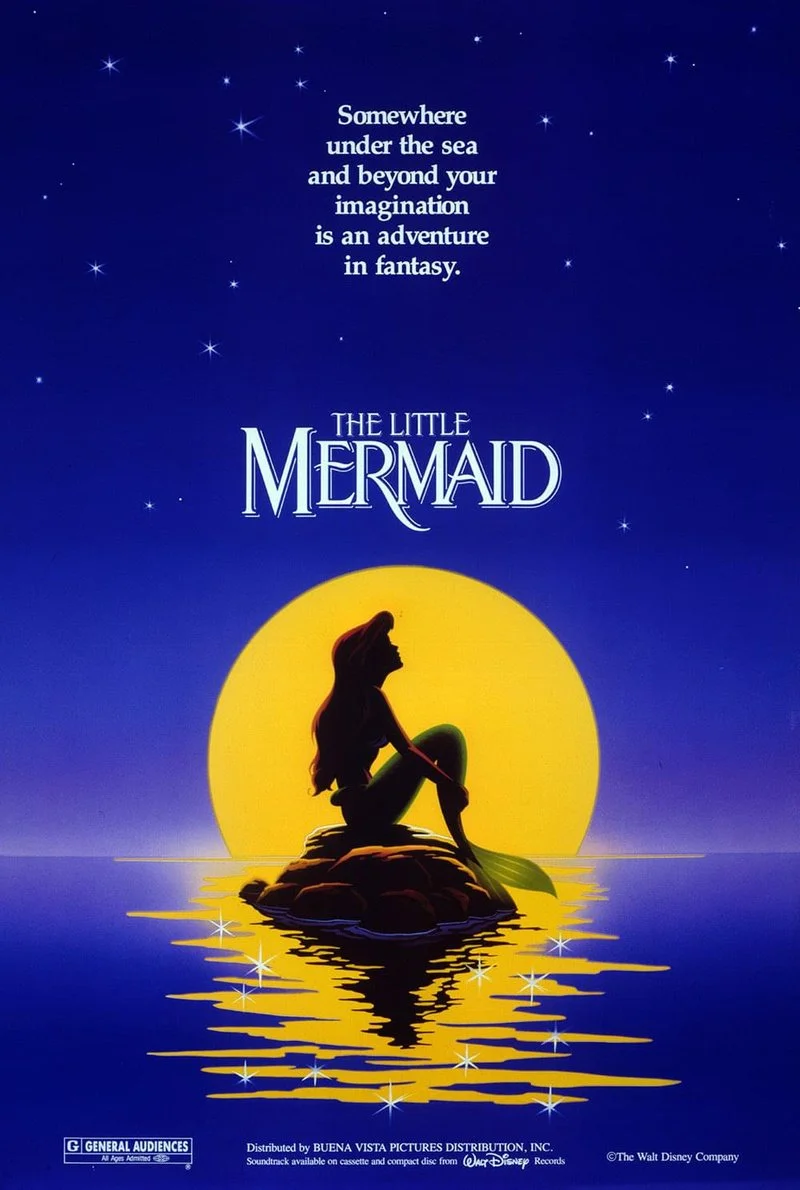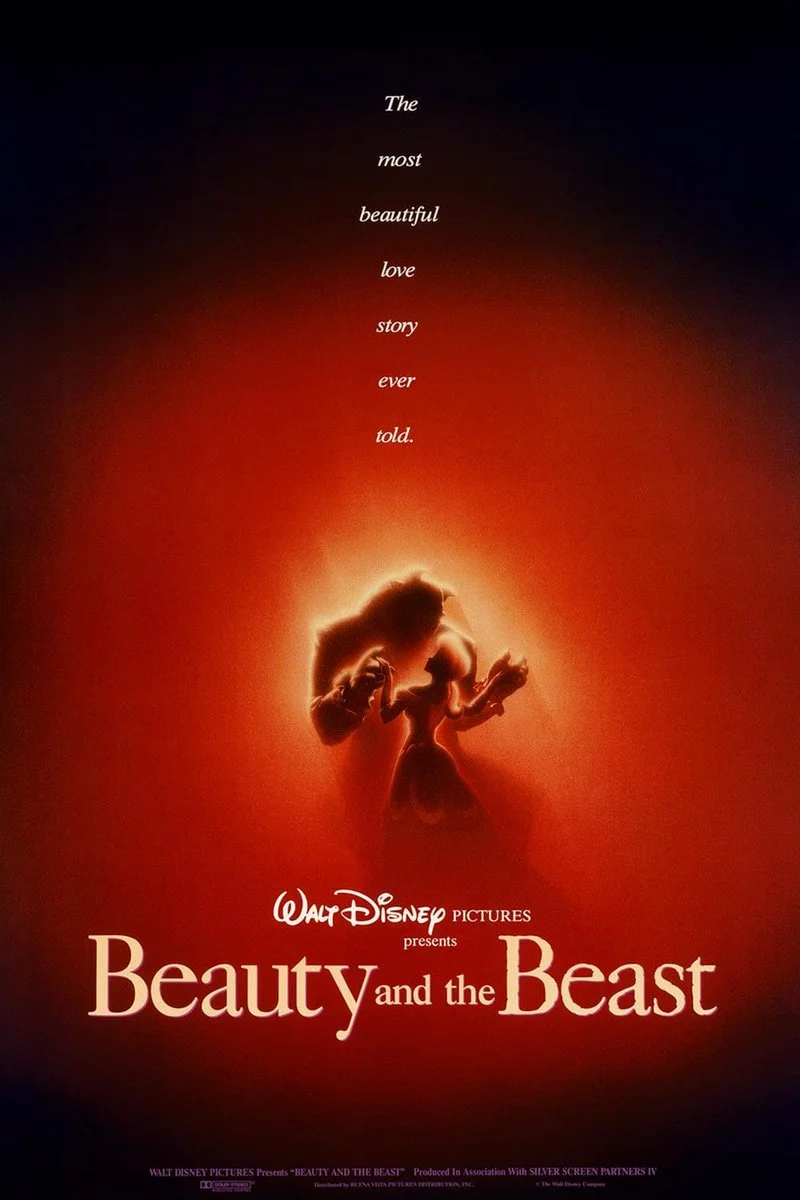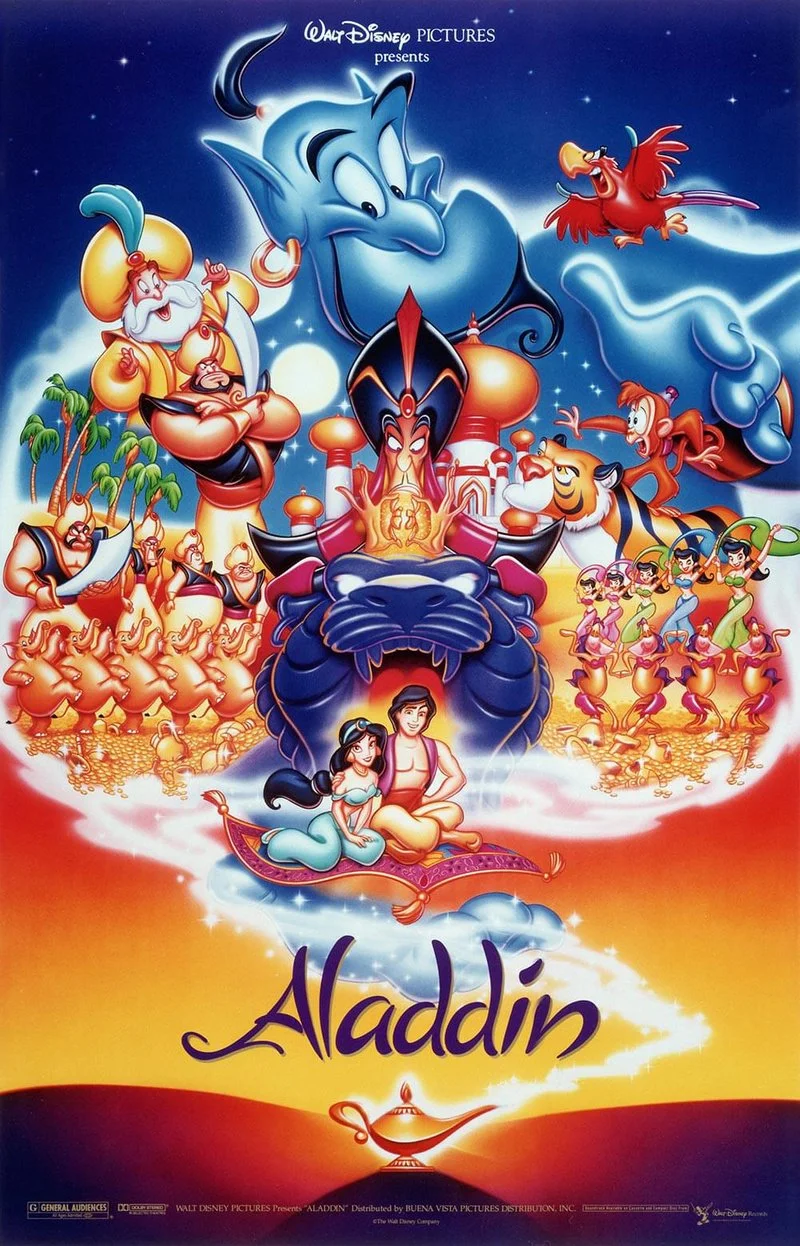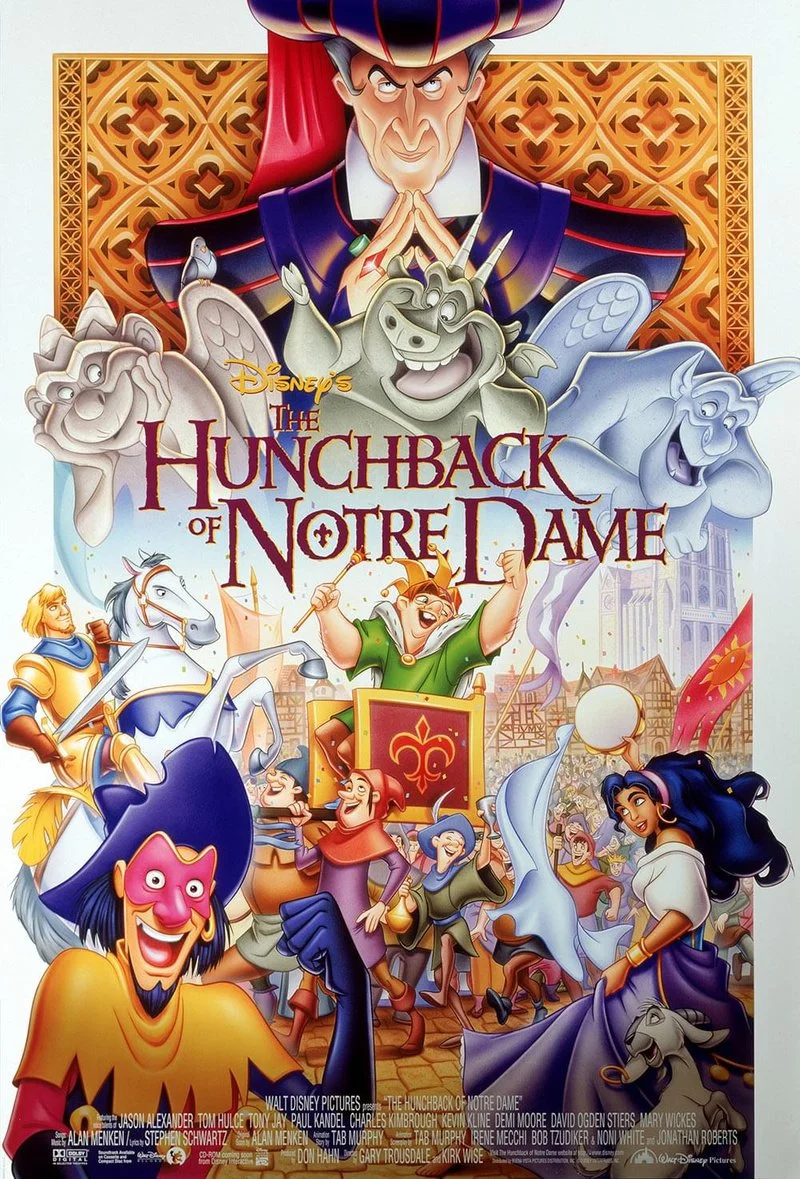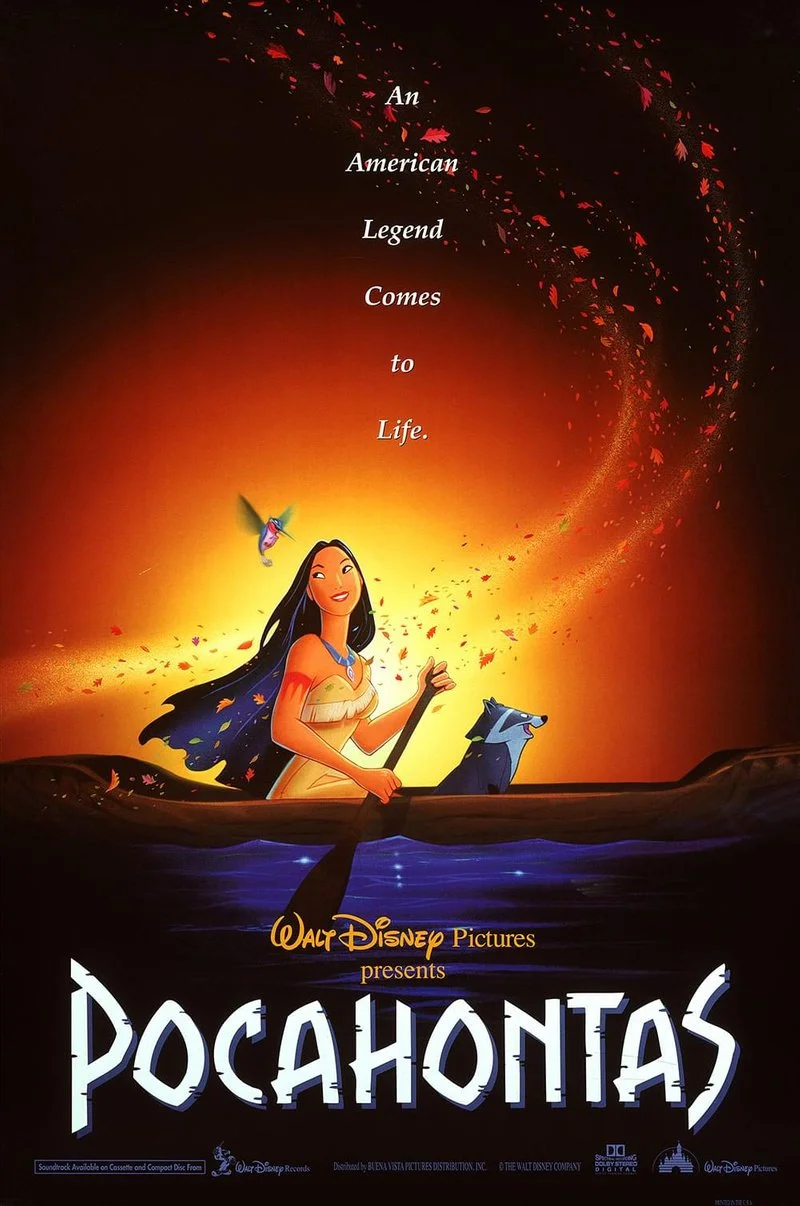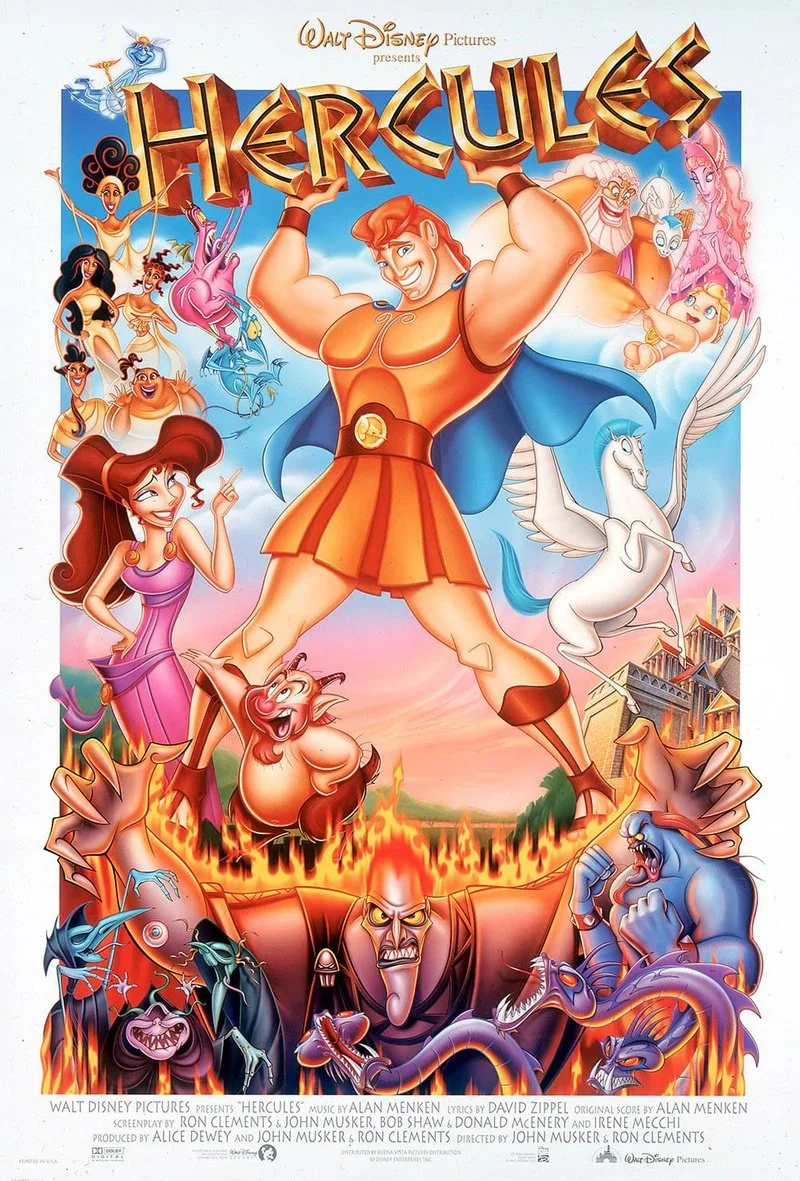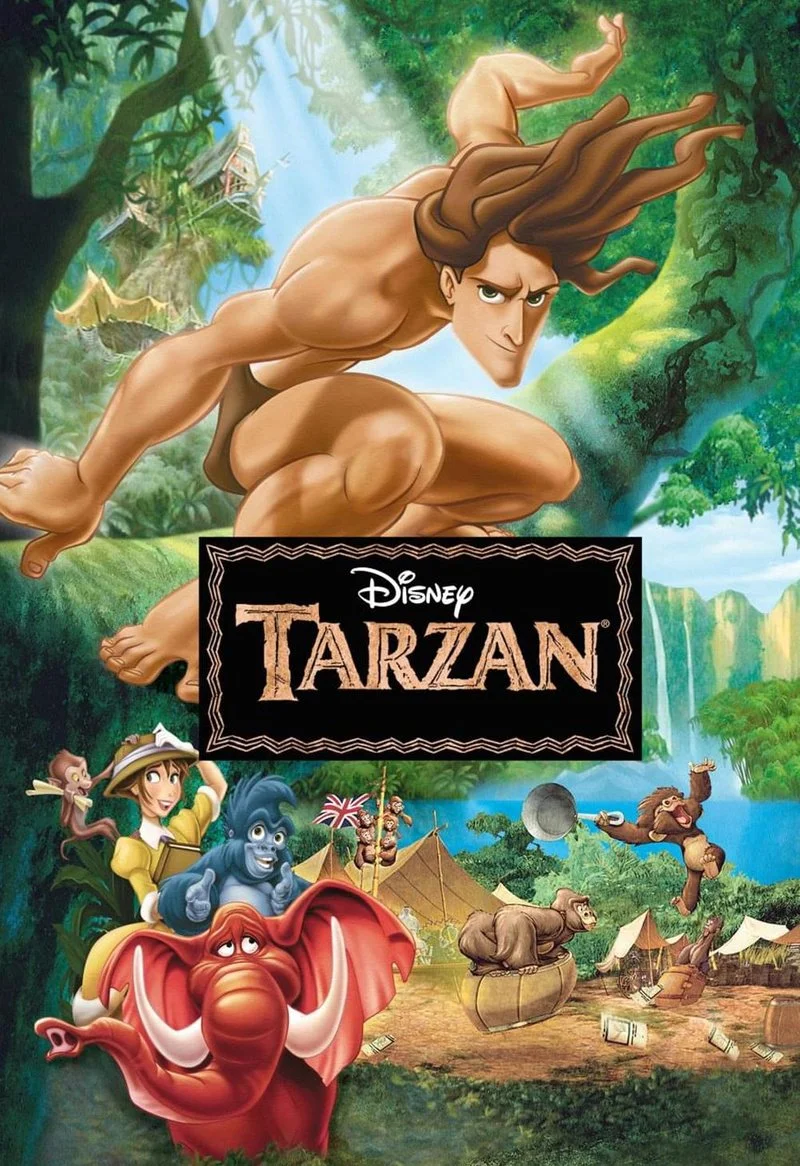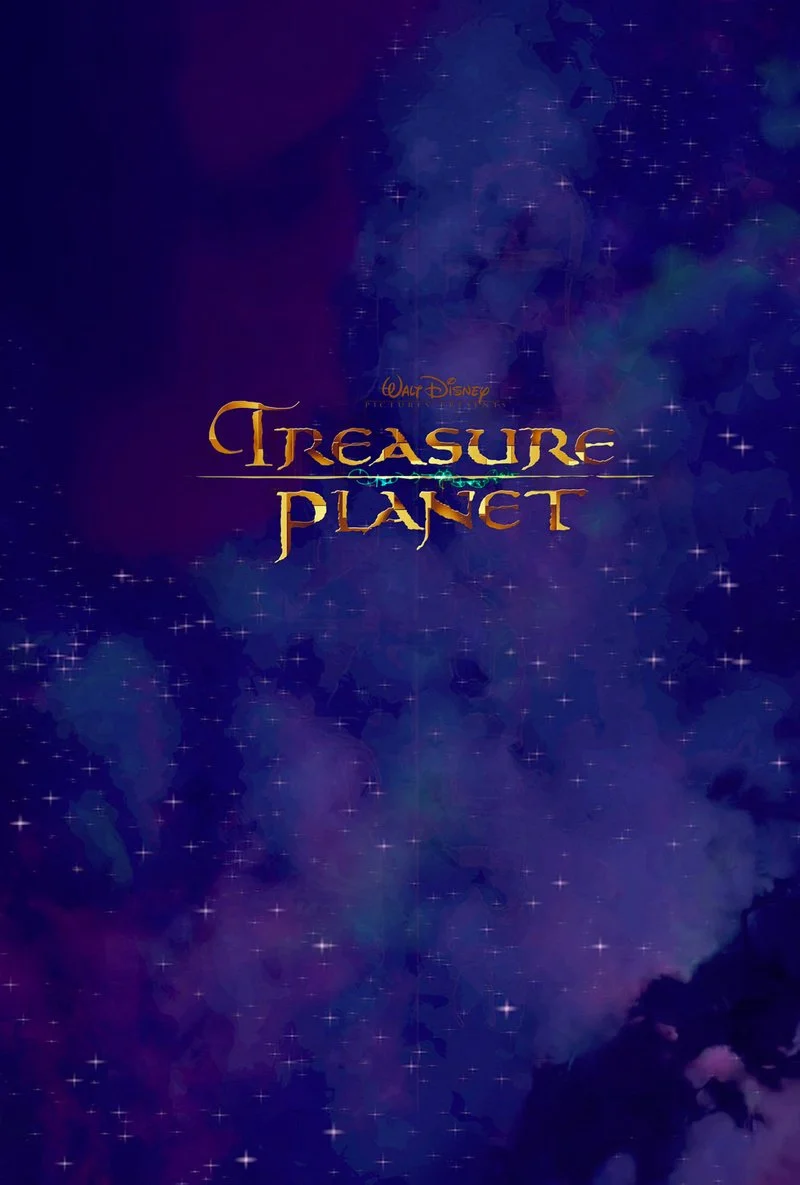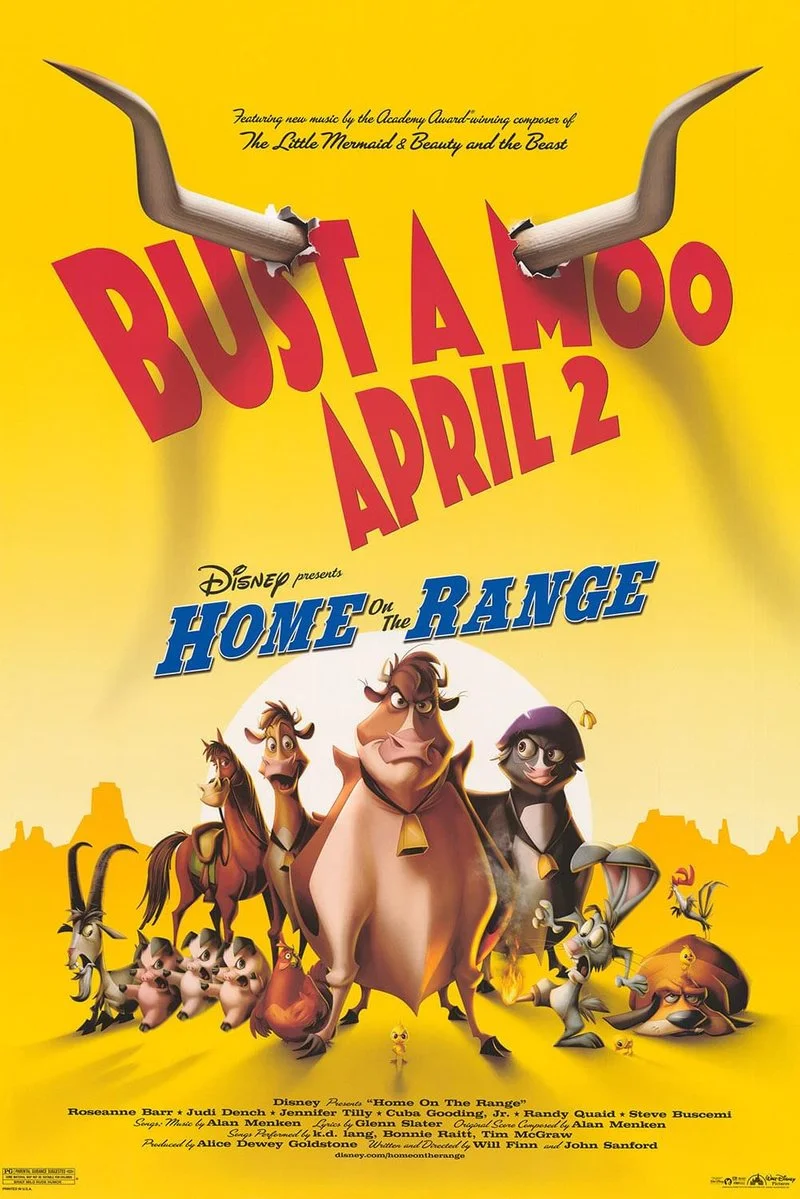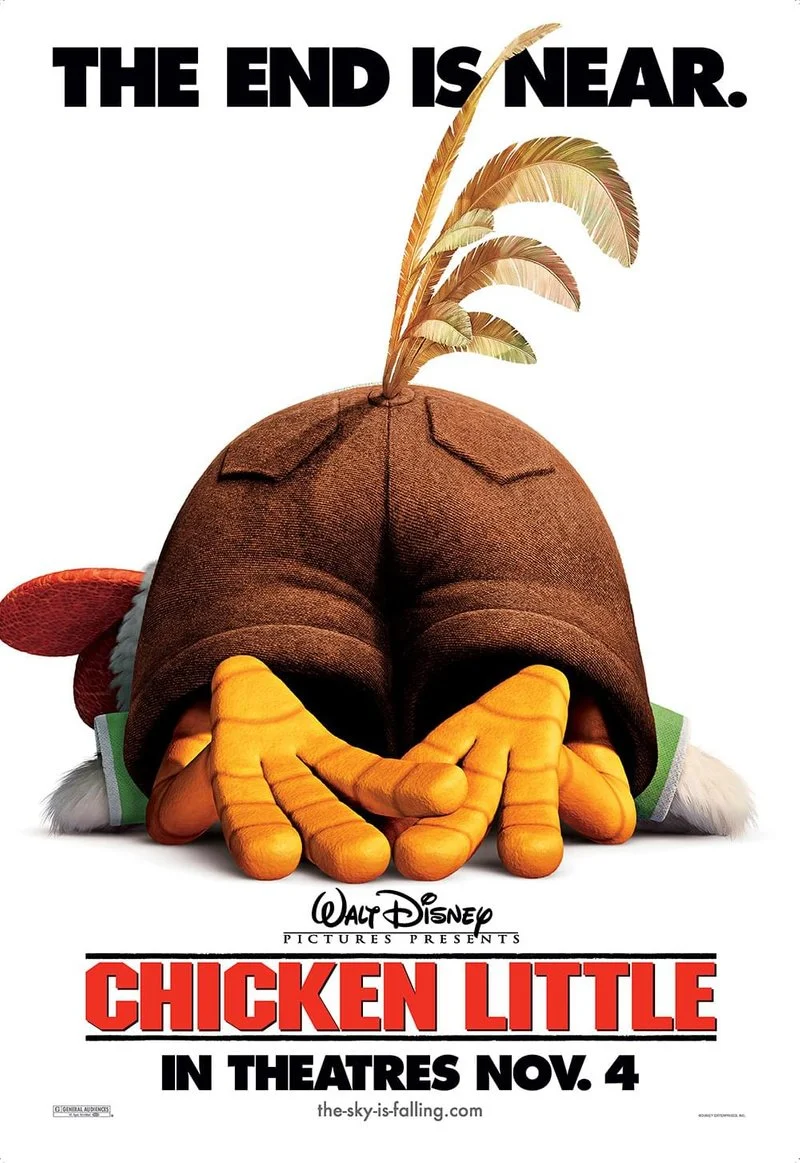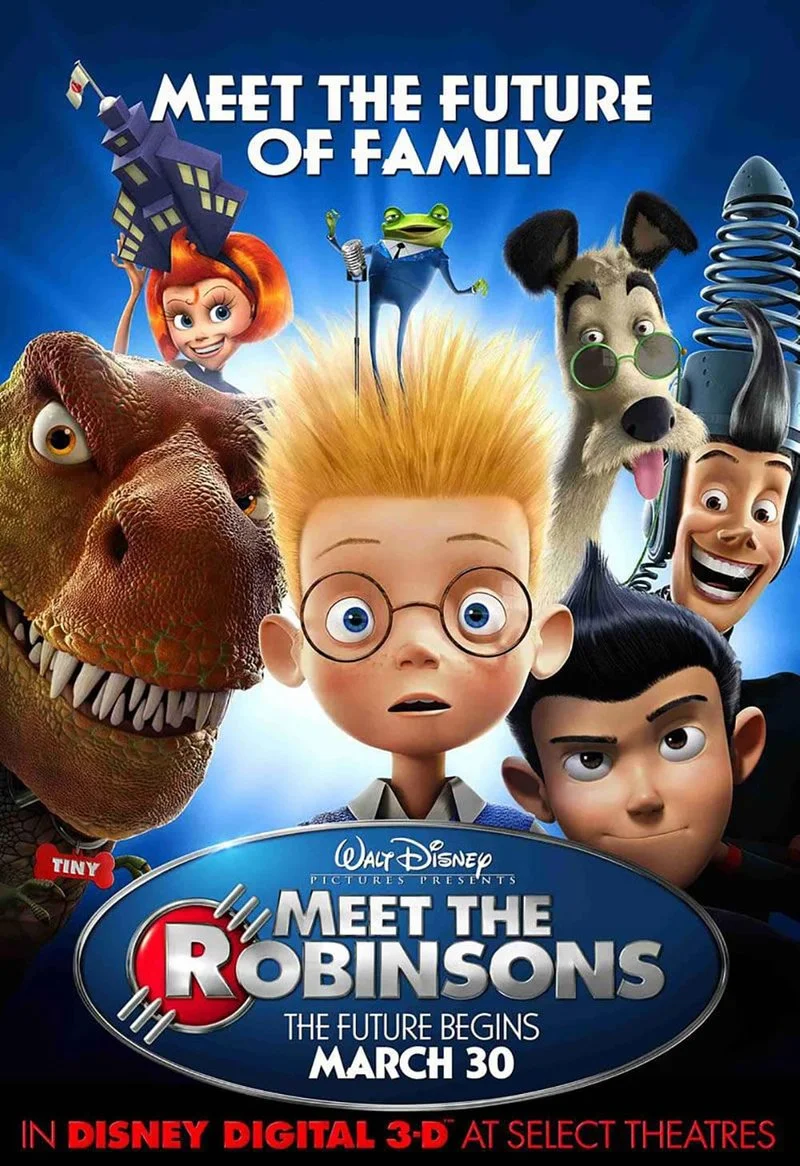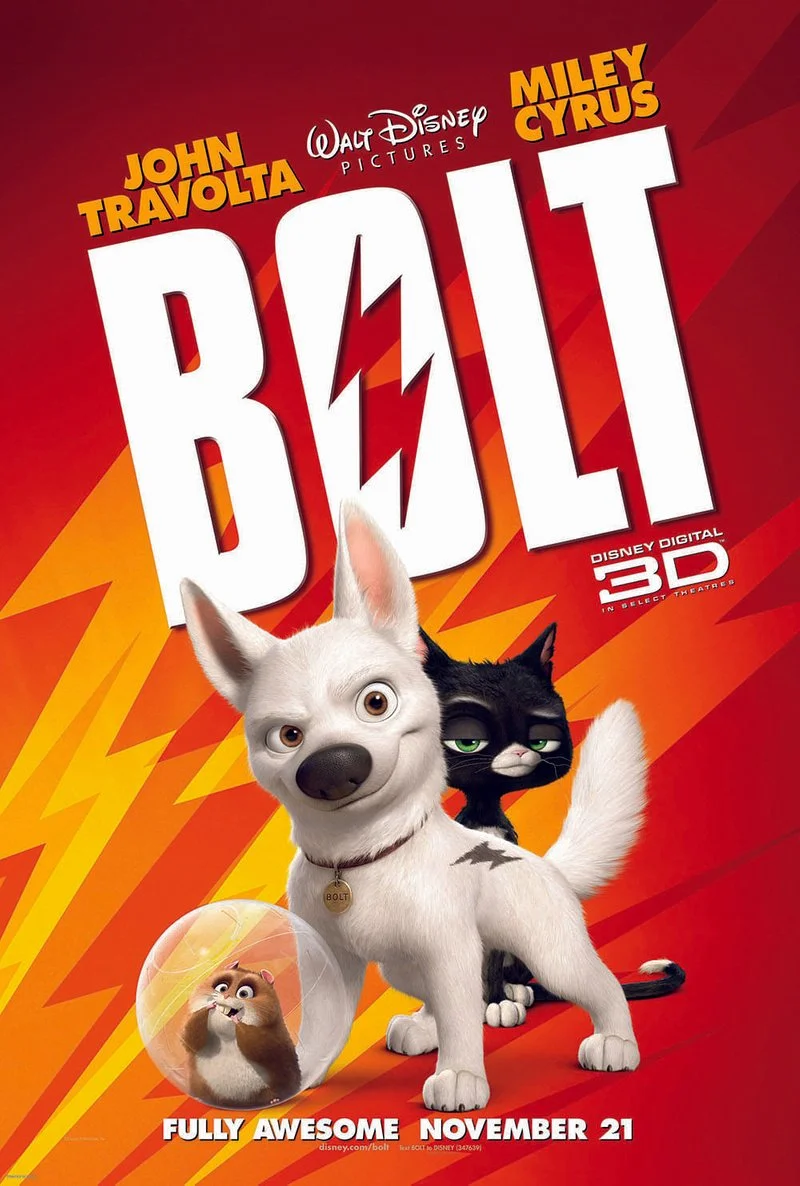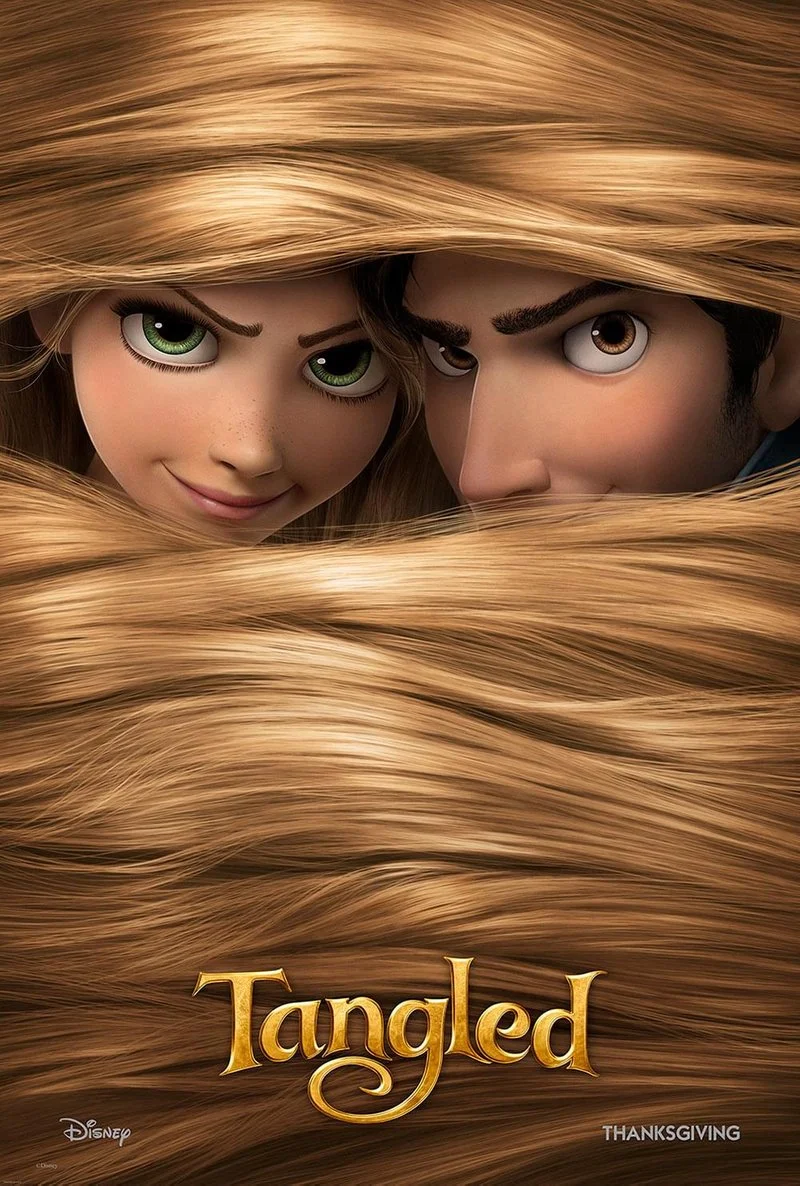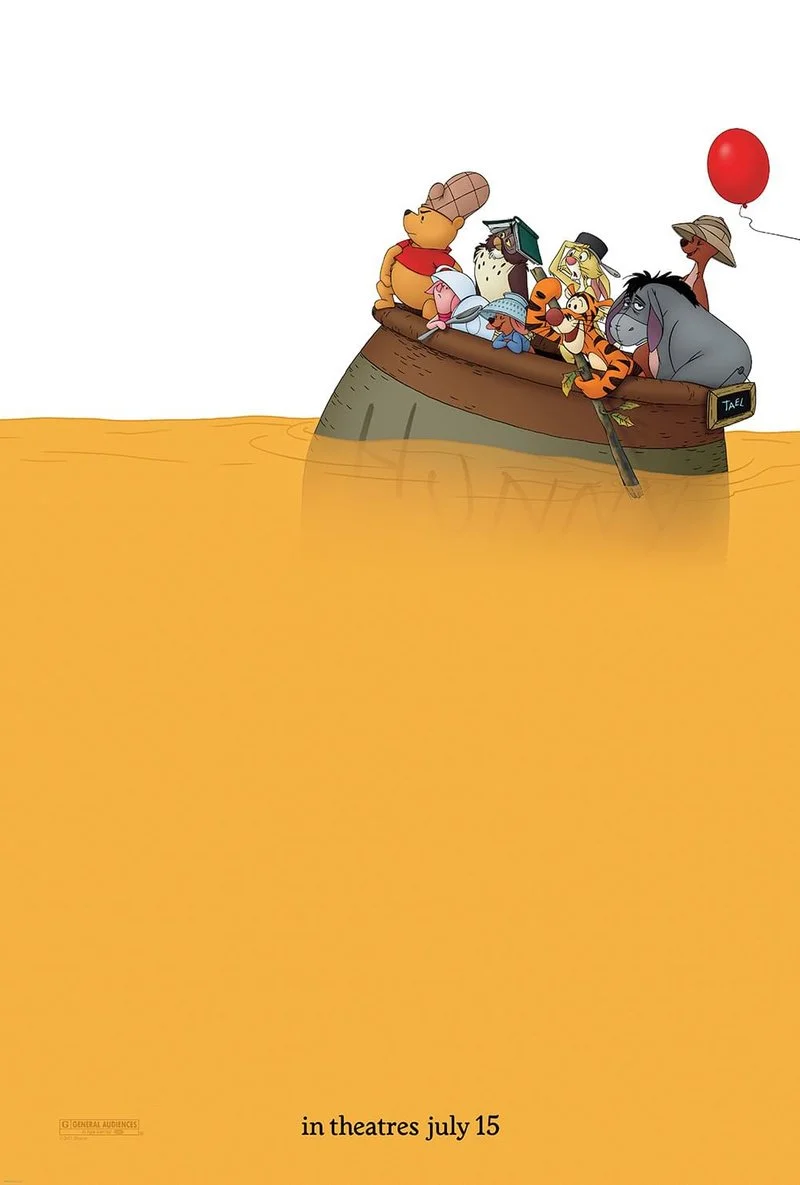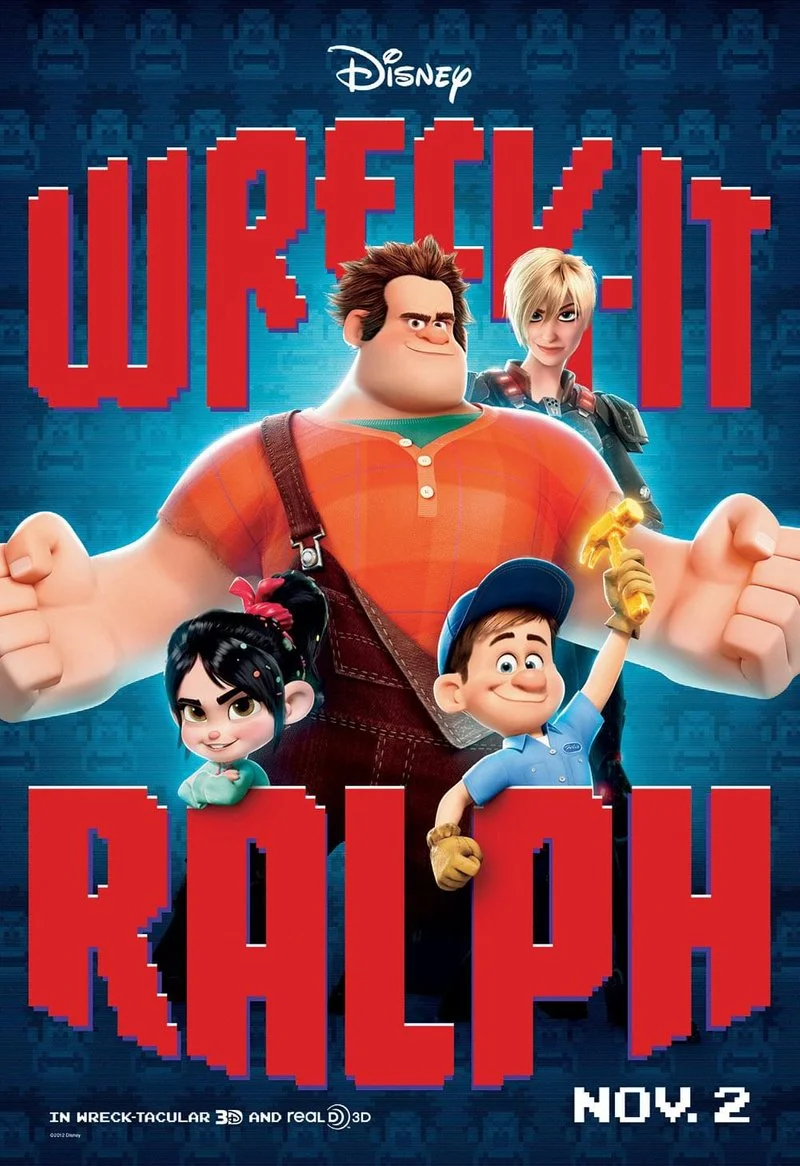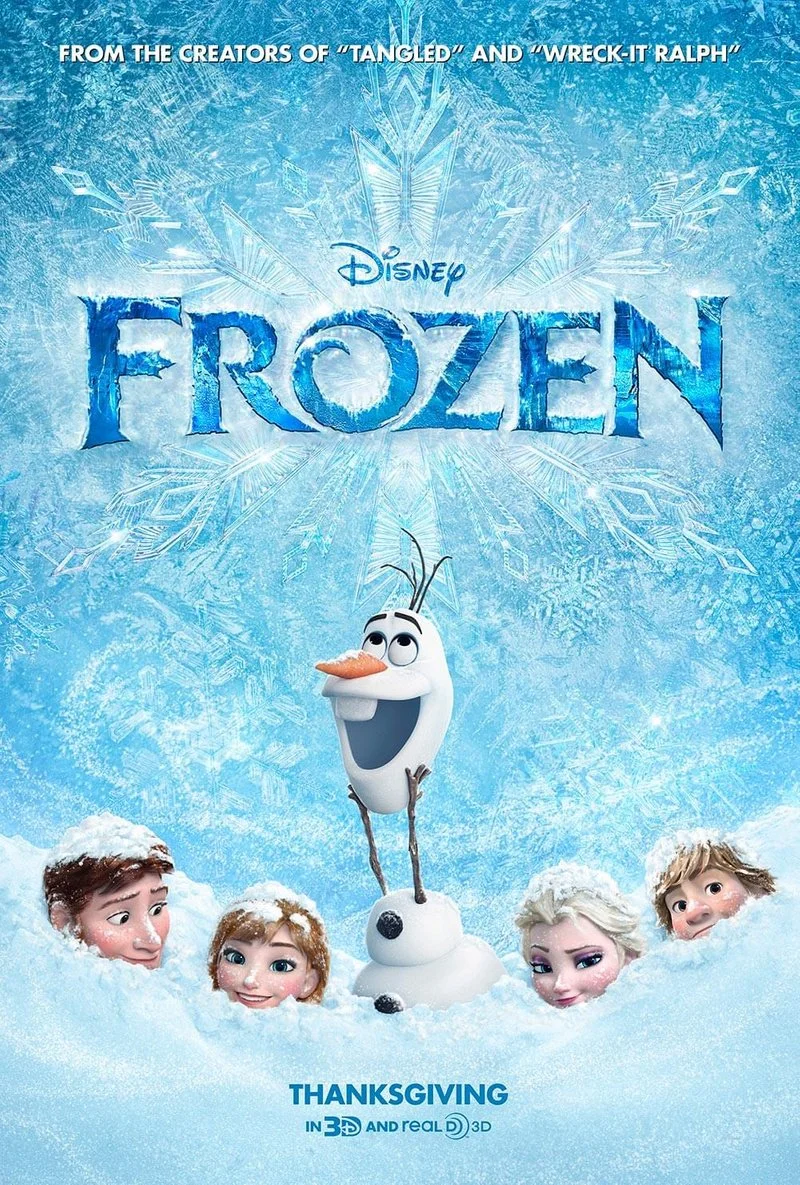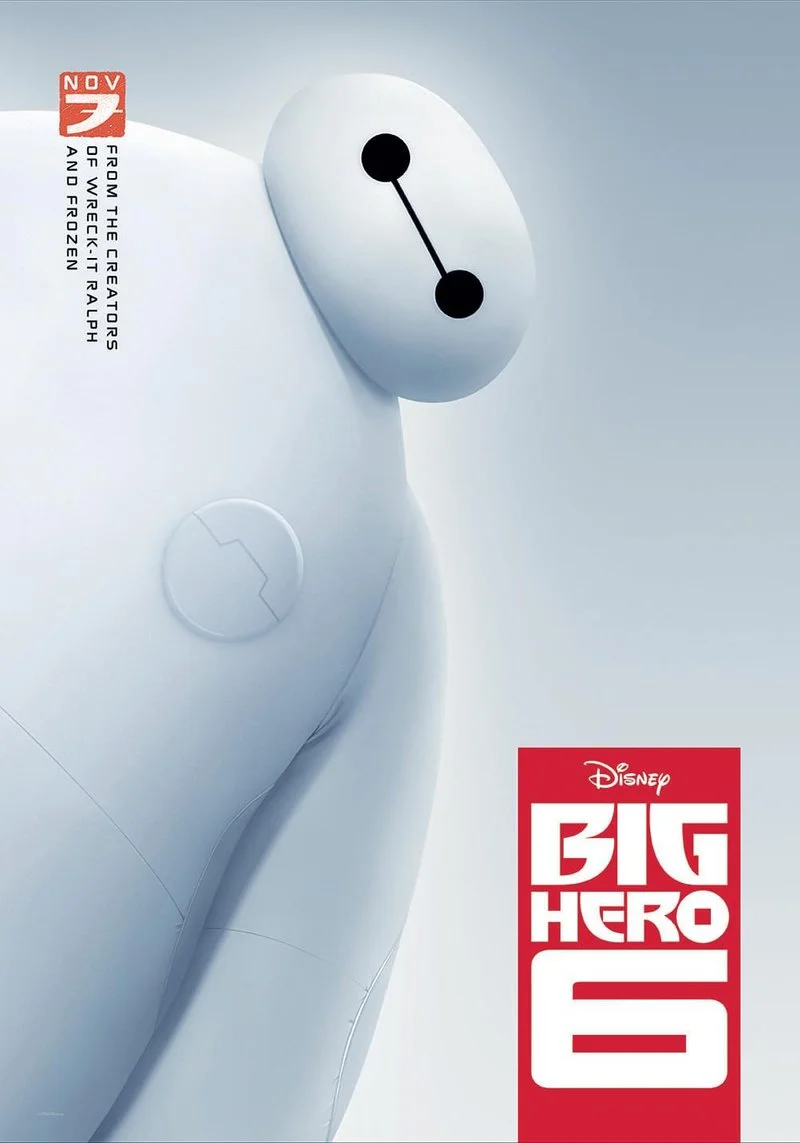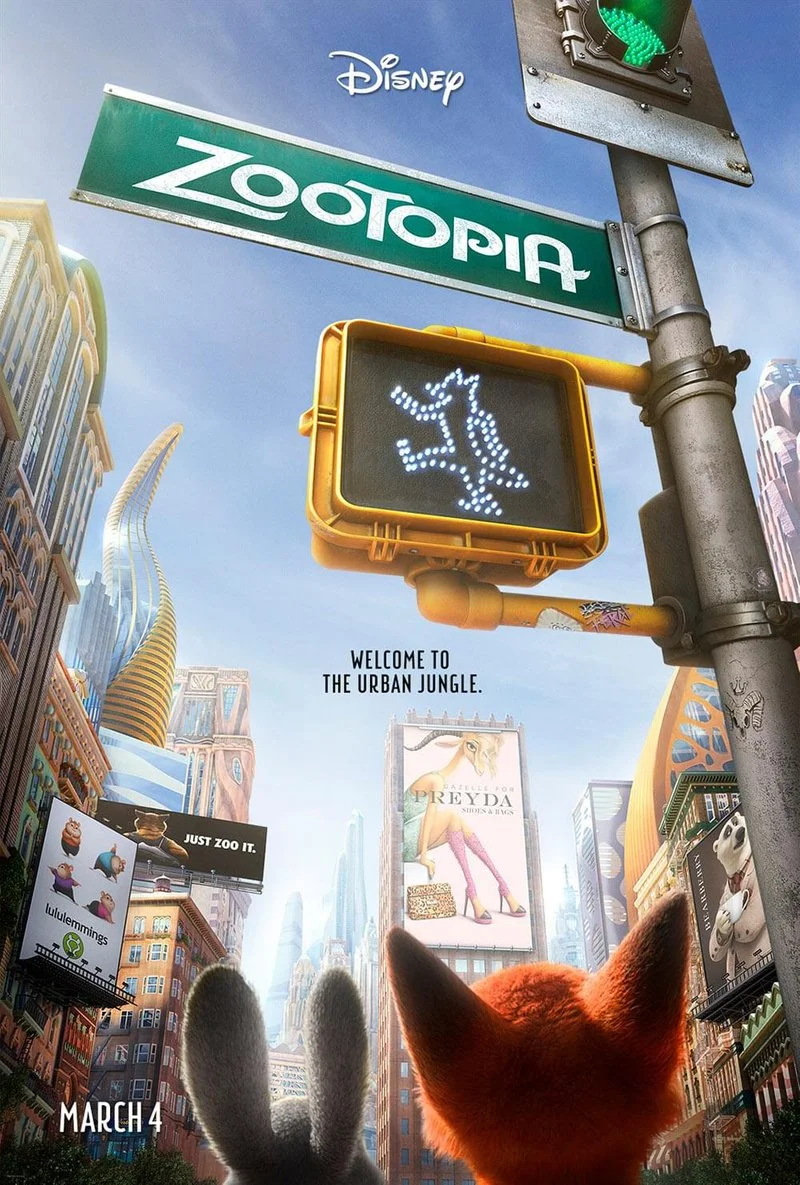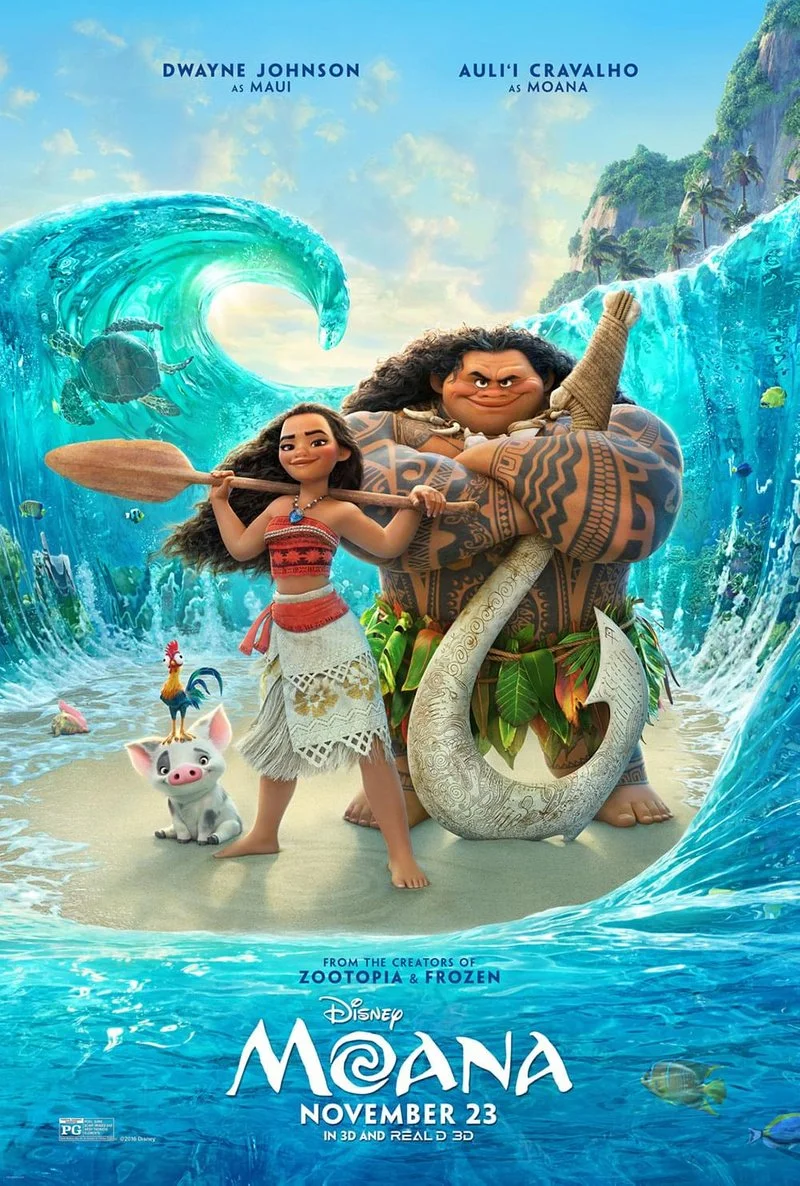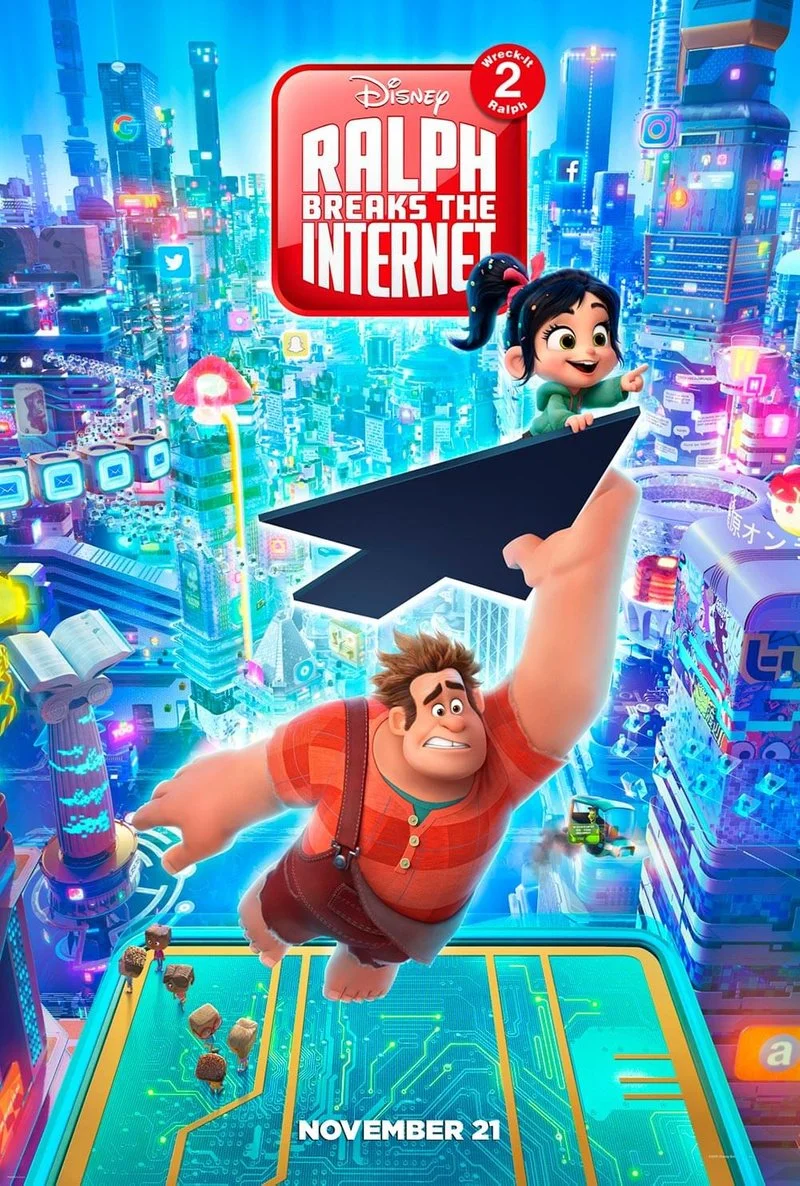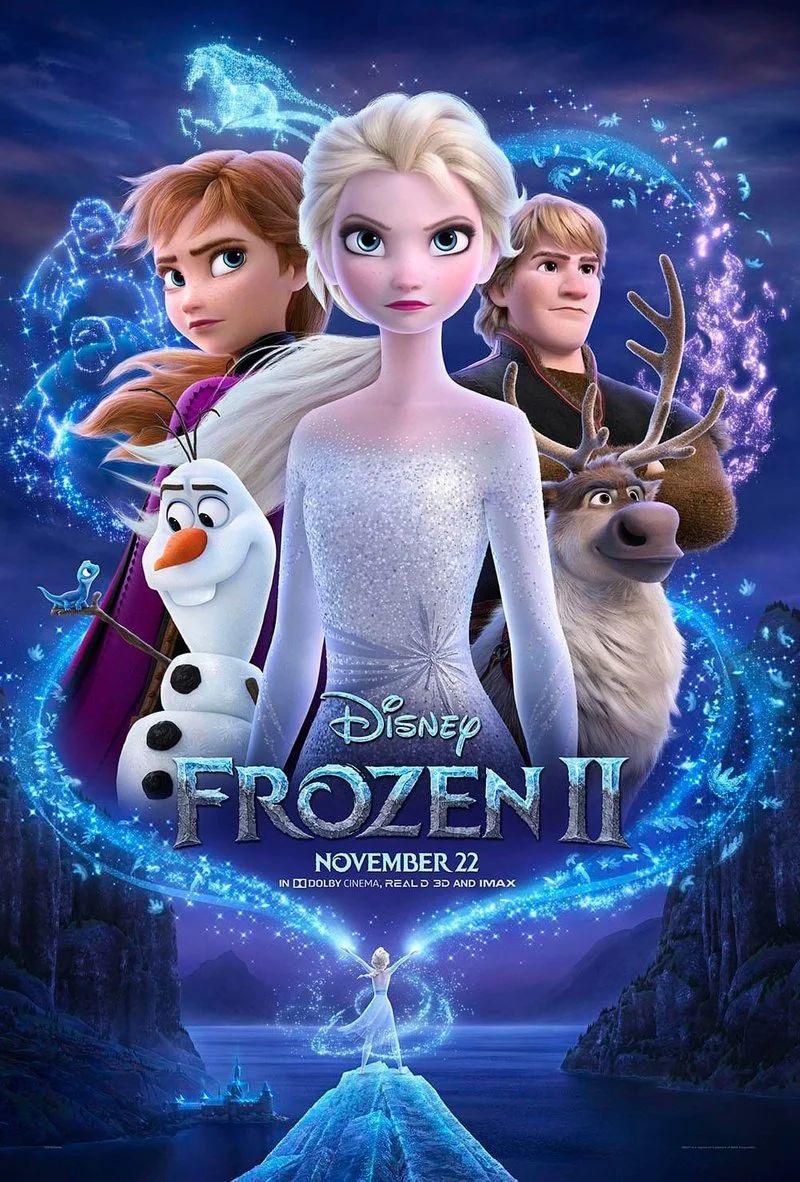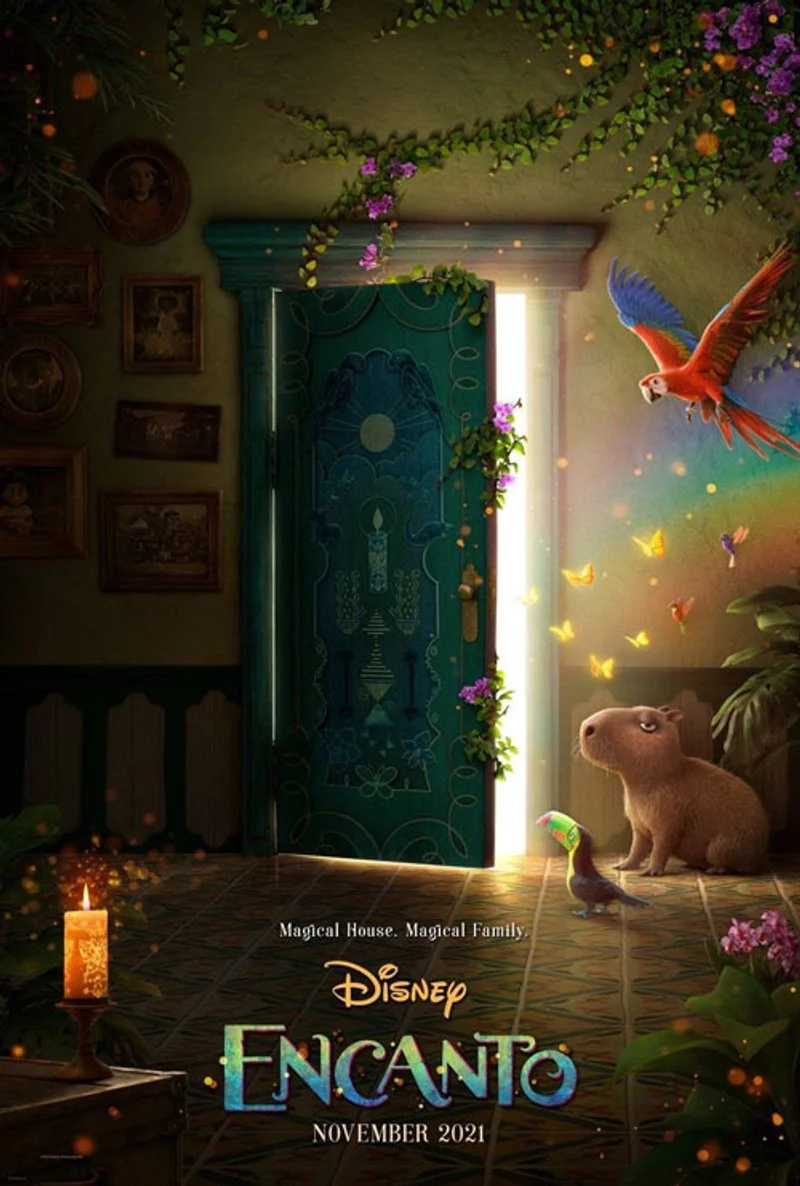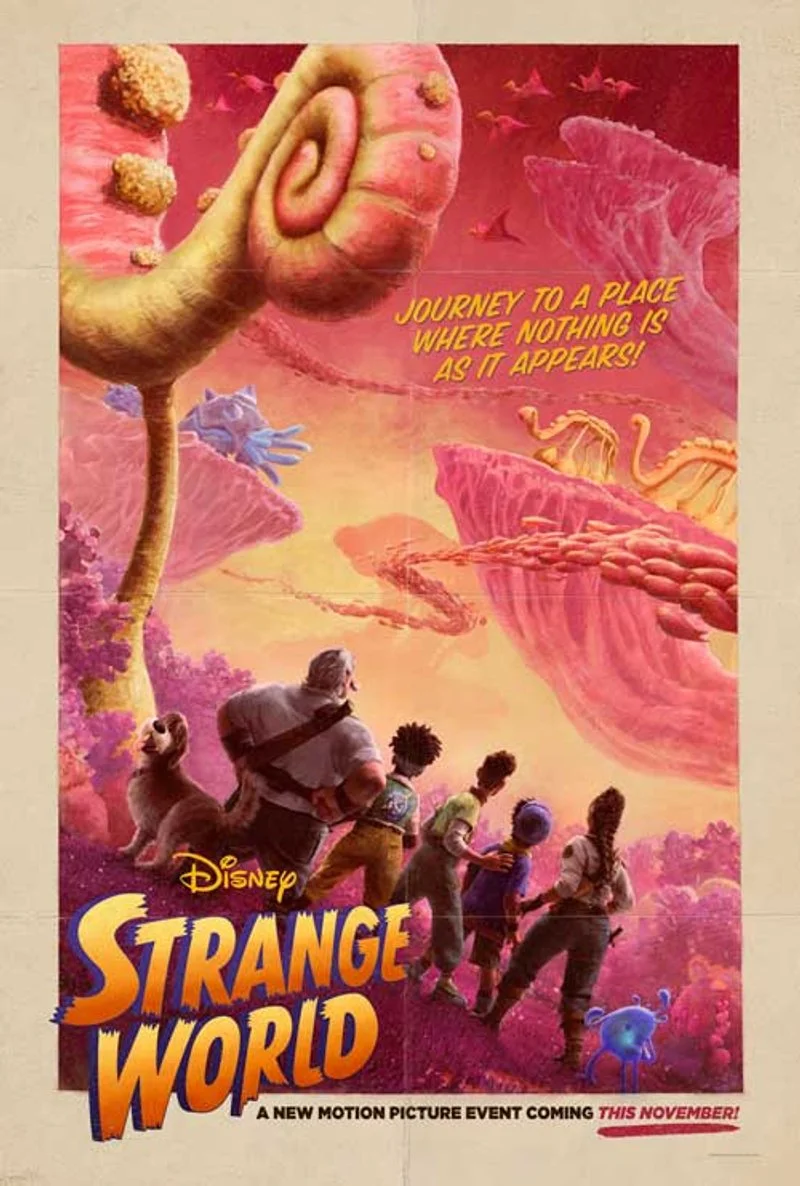Disney Animated Classics: The Eras Explained
Disney started a rich tradition of full feature animated movies when they first released Snow White and the Seven Dwarfs back in 1937. Since then the studio has seen a lot of ups and downs - movies that had low expectations have become instant classics, and movies that should have been huge hits have bombed - and everything in between.
In hindsight we can distinguish between different eras in The Walt Disney Animated Classics catalogue. Here’s a breakdown of each era, the movies that were released and a little bit of historical context. I’ll keep adding to this blogpost as more movies get released.
The Golden Age (1937 - 1942)
Disney’s Animated Studio’s Golden Age marked the beginning of Walt Disney’s reign over full feature animated movies. While only a few of the movies actually managed to make money, the movies that came out of this era are considered to be some of the best and most classic, nostalgic movies the film studio has ever produced.
-
When Snow White and the Seven Dwarfs was released in 1937, it was an unexpected spectacular success. While Walt Disney was working on the movie, the industry dubbed it ‘Disney’s folly’, thinking it was ludicrous to try to create a full-length animated feature. In modern days Snow White is often viewed as a somewhat passive character, but at the time she symbolized something else entirely. In 1937 the Great Depression (1929) was still fresh in everyone’s memory, and a lot of the movies that came out at the time were all about how goodness and kindness overcame all obstacles. Snow White’s homemaking character sparked a sense of nostalgia for a lot of viewers, as a lot of women were forced to find work outside of the home as a consequence of the Great Depression. So even with its very first movie, Disney managed to speak to people’s sense of nostalgia. And I think that’s pretty impressive.
-
Pinocchio was the second full length feature by Walt Disney Animation. This movie brought us When You Wish Upon A Star, which quickly became the unofficial Disney anthem. Jiminy Cricket was also an instant hit and became one of the characters that Disney put in the forefront, which we’ll touch on later. The movie did OK, but had to deal with a much smaller audience due to Asian and European markets being unreachable. The war, after all, was already ongoing. It also received some criticism as it has some pretty dark scenes and themes, and a good chunk of its villains/antagonists are never really brought to justice.
-
Fantasia started with The Sorcerer’s Apprentice, a short that was meant to bring attention back to Mickey Mouse. Walt Disney decided to expand this into a full feature length anthology movie, with 8 animated shorts set to classical music. It was meant to be an anthology film that could be updated and added to continuously. It was a critical success, but also had to deal with being cut off from European and Asian markets. On top of that, the movie theaters that showed Fantasia had to have an entirely new sound system installed, called Fantasound. Because of this, it was decided that the movie would be shown during a roadshow, where there was a team available to build and deconstruct the Fantasound system each time. Upon initial release, the movie lost a lot of money, but over the years it has made up for that and become an important piece of cinematic history.
-
After the disappointing results of Pinocchio and Fantasia, Dumbo was created on a much lower budget. Clocking in at 65 minutes, it’s one of the shortest films created by Disney Animation. This was mostly done for some (relatively) quick cash, and it did the trick. It’s also an adorable movie and Baby Mine never fails to make me cry.
-
Bambi was another project that Walt Disney was very passionate about. He brought live animals into the studio to teach the animators how to draw these creatures. This movie struggled at the box office as well upon its first release, for the same reasons as some of the other movies that were released during this era.
What stands out most to me about this movie upon rewatching it is the soundtrack and how even the sound effects like the storm were performed by a choir.
The Wartime Era (1942 - 1949)
World War 2 was going on, men were being shipped off to the front in Europe and the people back home didn’t really have movie-going on the brain. Walt Disney’s animation team was thinned out due to animators going to war. He himself was brought in by the government to create wartime propaganda movies. If you look for it, you’ll probably still be able to find some shorts featuring Donald Duck. Walt Disney was very proud to be an American and of course put a lot of energy into the propaganda films. However, these didn’t really pay. In order to still have some money coming in, the studio produced ‘packaged’ films. These movies are compiled of shorts and are often dubbed over rather than having synchronized voice acting. This lasted until a few years after the war, as it took some time for people to have residual income and be willing to spend it on going to the movies. This was doubly true for Europe, that was dealing with huge levels of devastation and was focused on rebuilding.
-
The US State Department commissioned this film as part of a goodwill initiative - called the Good Neighbor policy - aimed at South America. The goal was to strengthen the bond between the US and countries in Central and South America, especially as there were deepening ties between some countries and Nazi Germany. Walt Disney and 20-ish artists, such as composers and technicians, were brought to a total of 5 countries: Brazil, Argentina, Chile, Bolivia and Peru.
The film consists of a total of 4 segments, which are a combination between a live-action documentary and animation. Brazil, Argentina and Chile got their own segments, whereas Bolivia and Peru got their moment in the Lake Titicaca segment. The other segments are called Pedro, El Gaucho Goofy, and Aquarela de Brasil. This last segment was also the world’s first introduction to José Carioca.
-
This second film that was part of the Good Neighbor policy program was also created as part of Donald Duck’s 10th anniversary. Throughout the film, he opens birthday presents which lead into unrelated segments. The segments consist of a combination of live-action actors and animation. Throughout the segments, Donald meets up with José Carioca and we also meet Panchito
-
With so many animators in Europe, the studio was sitting on a bunch of incomplete story ideas. This is where they really got turned into short movie segments. Make Mine Music consists of ten segments: The Martins and the Coys, Blue Bayou (originally intended for Fantasia), All the Cats Join In, Without You, Casey at the Bat, Two Silhouettes, Peter and the Wolf, After You’ve Gone, Johnnie Fedora and Alice Bluebonnet, and finally The Whale Who Wanted to Sing at the Met. Some of these have a presence in the parks, however small. We all know about Casey’s Corner, the baseball-inspired hotdog shop in Main Street. If you’ve ever wondered who this Casey is, now you know. Peter and the Wolf also had a scene in Disneyland Paris’s Storybook Boat Ride for a very long time, but that has since been replaced by Frozen.
It did pretty decently when first released, and was available on Home Video (VHS and DVD) for a while. Now, however, it’s pretty hard to come by. You can occasionally find a DVD in a boxed set. If it’s the US or UK version, you’ll receive an edited version that doesn’t include The Martins and the McCoys due to its excessive gun firing sequences, as well has having some imagery that was deemed too sexual edited out of All The Cats Join In. The Nordics did have an unedited DVD release, so if you’re lucky you may be able to find that. Some of the shorts were released individually through different collections on VHS as well.
Fun fact: as of right now, this is the only Disney Classic movie that is not on Disney+. Although we don’t know of any official reason, I think it’s reasonable to assume it’s due to the images that were edited out of the US and UK home video releases.
-
This movie consists of only two separate stories, of which one is quite honestly often forgotten. The entire movie is introduced by Jiminy Cricket (told you he’d be back). The first story that Jiminy introduces us to is the story of Bongo. After that, we go into the much more memorable Mickey and the Beanstalk. Originally pitched as a full feature idea, it shows Mickey, Donald and Goofy going on the well-known adventure of magical beans, beanstalks and a giant.
-
Another anthology film, Melody Time consists of seven segments: Once Upon a Wintertime, Bumble Boogie, The Legend of Johnny Appleseed, Little Toot, Trees, Blame It On the Samba, and Pecos Bill. Noteworthy here is the animation style used in Trees, in which cells were laminated before being photographed and thus having a unique look. Blame It On the Samba features Donald Duck and José Carioca and is a mixture of live-action and animation. And finally, Pecos Bill was initially also edited for the home video release, as there was quite some smoking going on, but the segment was later added back in in its original form for the Disney+ release.
-
The last packaged film for a while. The first story is that of Mr. Toad, which is based on Wind in the Willows. The second is based on The Legend of Sleepy Hollow. These two stories were often shown separately, but were relatively well received. Both of these stories also have a presence in the Disney parks. Although the American parks do a little bit more, with Mr. Toad’s Wild Ride and showings of the Headless Horseman during Halloween season. In Disneyland Paris all we have is Toad Hall Restaurant near the back of Fantasyland.
The Silver Age (1950 - 1959)
After the devastation of the war, people were longing for the olden days (as people do). This was reflected in everything, and of course Hollywood was no exception. Disney went back to its big budget movie productions, and back to its classic fairy tales. This era brought us some of the most iconic characters and symbols we immediately visualize when we think of Disney.
-
Ah, Cinderella. Only the second ever true princess story Disney did. This movie did the same as Snow White: it reminded people of a ‘better’ time – the prewar era. This was a movement that was visible throughout popular culture. And sometimes, those pop culture influences collide: Cinderella’s silver ballgown (yes, silver. Don’t argue with me on this.) was inspired by Dior. Even fashion went back to classic silhouettes from a time long gone, where women didn’t have to think about the practicality of their outfits. Anyway, back to the movie. This was Disney’s biggest hit since Snow White and the Seven Dwarfs. Of course the character of Cinderella got plenty of criticism, especially in later years. However, once again, she was exactly what people needed and wanted to see in her time: a kind person who through the power of never losing hope for better days, gets what she deserves. And those that harmed her get what they deserve, too.
-
This is a special one. Walt Disney’s animation studio started off doing animated shorts with a live-action Alice mixed in. Here is where it comes full circle where Alice in Wonderland is created and released as a full length animated feature. Initially Walt wanted this to be his first real movie, making it a mix of animation and live-action. In the end though, he went with Snow White and the Seven Dwarfs. The idea for Alice in Wonderland was revived in the 1940s and voila… it was released in 1951. It did not do well. At all. With the whole movie kind of feeling like a fever dream, it didn’t fit with the times. However, when it was re-released in the 1970s it was a smash hit. Maybe you can make the connection on why it did work in that decade…
-
This movie brought us the next iconic Disney character that pops up any- and everywhere: Tinker Bell. Some parts of this movie definitely didn’t age well. Disney tried to rectify some of it with the live-action Peter & Wendy, but… we won’t talk about that movie. And yet, possibly one of the saddest elements of this movie is the story of little Bobby Driscoll, who voiced Peter Pan. He had at that time already appeared in a few live-action Disney movies. Peter Pan really was his last big success. He hit puberty and that more or less spelled the end of his career. He did still make some appearances, but he spiraled into a life of drugs. He managed to claw his way back to recovery, but it didn’t mean much in terms of his acting career. He passed away unnoticed in 1968 - his body was found by two children. Not knowing who he was, he was buried in an unmarked grave.
-
This movie was based on - of all things - a short story called Happy Dan, the Cynical Dog, first published in Cosmopolitan. Yes, that Cosmopolitan. When it came out, it received some mixed reviews. By now however it’s often well-remembered and appreciated.
Red Cocker Spaniels became so popular after this movie, that breeders went a little crazy with it. Due to that (inbreeding and such) we’re now stuck with red-Cocker-syndrome. These Spaniels can occasionally, unpredictably, suddenly get an attack where their eyes sort of glaze over, they start foaming at the mouth and become very aggressive. There’s no cure - if this happens, they have to be put down. And this is why you don’t get your pets from pet shops or unregistered dog breeders.
-
This movie is - in my opinion - still one of the most beautifully animated movies Disney has ever produced. A lot of the artwork and backgrounds were done by Eyvind Earle, and his unique animation style gives this movie its own flair. On top of that, because of the rise of television, Disney decided to experiment with dimensions. In an attempt to make Sleeping Beauty stand out from other films and the television series that were rising in the 1950s, Disney played with the aspect ratio of the film. They released it in Technorama 70mm, which was the first time it had been used ever.
Also, when Walt Disney started work on the very first Disneyland park, he decided to put Sleeping Beauty’s castle smack-dab in the middle of it, even though the movie hadn’t even been released yet. So I guess pushing IP in the park really isn’t such a new phenomenon after all.
The Transition Era (1961 - 1969)
This isn’t always considered to be separate era, but you can see a difference in animation style in these movies. They look less ‘clean’ because the animators made generous use of the Xerox technique in animation. This significantly reduced the time and thus money it took to paint animation by transferring paint directly to cells, so the entire inking department was out of work. The only drawback: it required the animation to have a black scratchy outline. This is also the time we start to see some recycled animation, albeit more subtle than it would become in future eras. Over the years, with each round of (digital) restoration, some of these lines were removed. This period also marks the last movies that Walt Disney himself worked on prior to his death in 1966.
-
This one did pretty well. And it couldn’t have come at a better time, as the studio had just lost a bunch of money on Sleeping Beauty and there were talks of shutting down the animation department. Luckily, this is the time that the Xerox camera came into being. This significantly reduced the time and thus money it took to paint animation. Here we also start to see a bit more of the copy/paste animation that some of the movies in the ‘60s and ‘70s became known for…
-
The story of how King Arthur came to be, based on a novel of the same name they went with for the movie (in Dutch it’s called Merlin the Wizard, which puts the emphasis somewhere else entirely). Disney initially tried to develop this movie a few times since they first acquired the rights to the movie in 1939, but it didn’t happen until now. It did pretty well, and Merlin is still often referenced in other pieces of Disney-related media, such as videogames. Frank Thomas and Ollie Johnston, two of Walt’s original Nine Old Men (Disney animators from the first hour) say that this movie contains some of the best animation they’ve ever done. (Even though it does contain some recycled animation…)
-
This was the very last movie that Walt Disney himself supervised and provided creative input for before his death in 1966. With all the stories that go around about Walt, some say that this movie’s messaging isn’t right (“You belong with your own kind”). I personally don’t think it’s that deep. After all, even Tarzan really just wanted companionship, didn’t he?
Anyway, this movie did extremely well and even became the most successful animated film released during its initial run.
The Bronze Age (1970 - 1977)
After Walt’s death, the Animation Studio was searching for what would come next. Walt was always very involved in the creative process, and the phrase “What would Walt do?” was often heard around the hallways. Some accounts include all the movies up until 1988 into this era, and others have split those two eras up. I’m in the latter group. Another thing that marked this era was (more) reuse of older animation. The result is that you can see certain scenes in movies from this era that seem oddly familiar… until you go back and watch, for example, Snow White and the Seven Dwarfs and Robin Hood. Or if you put the Jungle Book and The Sword in the Stone next to each other… or even next to Winnie the Pooh.
-
Disney OK’d this movie as The Jungle Book was nearing completion, making it the last movie that Walt Disney personally approved. Upon release the movie was very popular, particulary in France. We can still see evidence of this; Disneyland Paris is full of France/Paris-specific merch with the cats all over it.
-
Robin Hood was the first movie that was truly post-Walt. It was also the first movie that had no human characters in it. I know you want to scroll back up the list to prove me wrong, but trust me on this, OK? It did well, even though it made more liberal use of recycled animation. Scenes from Snow White and the Seven Dwarfs, the Aristocats and Jungle Book all make appearances in this movie.
-
This was the first anthology movie that came out since The Adventures of Ichabod & Mr. Toad. It consisted of three previously released Winnie the Pooh shorts that were strewn together to make it a cohesive good-to-be-released movie. A fourth short was later added when it was released on home video. The shorts: Winnie the Pooh and the Honey Tree (1966), Winnie the Pooh and the Blustery Day (1968), and Winnie the Pooh and Tigger Too (1974), and Winnie the Pooh and a Day for Eeyore (1983).
-
This movie started production in 1962, but was then shelved. After Walt’s passing it was revived for the younger animators - including Don Bluth - to work on under supervision from the more senior animators. Initially the villain in this movie was supposed to be Cruella De Vil. In the end it was decided that this movie should have its own villain, and that gave us Madame Medusa. The movie got really great reviews and managed to gross more than Star Wars in France. Not bad for a practice movie for the junior animators.
The Dark Age (1981 - 1988)
So the Dark Age doesn’t necessarily sound good, does it? I feel like that’s mostly due to the dark tones of The Black Cauldron - as well as its effect on the studio as a whole, but we’ll get into that in a moment. The movies that were on the docket while Walt was alive had all been produced and released, and the company was struggling with where to go next. On top of this, the ‘80s brought in a new crop of animators who clashed with the old guard, many of whom had worked with Walt directly.
-
This bittersweet movie is based on a novel and started production back in 1977. It had two directors - not uncommon in and of itself - who couldn’t see eye to eye on how the story should develop. In the novel, a character death motivates Copper’s anger towards Tod, but not everyone was on board with killing off a character like that. The division seemed to be along the lines of seniority, where the younger animators started to push back against the higher-ups and wanted to stay true to the original story. In the end, they lost and the decision was made to keep the character alive. Injured, but alive. There were more fights about the content of the movie between the directors where the animators would choose sides. After another one of these arguments, Don Bluth and two of his colleagues handed in their resignation and left Walt Disney Animation. Soon after another 13 animators followed. Ron Miller, who was CEO at the time, decided to push back the movie release by several months and bring in a whole new crop of animators to finish the movie in time for that. Reviews for the movie were and remain mixed, but it did extremely well at the box office.
-
The origins for this story can be found in the books The Chronicles of Prydain, which in turn were based on Welsh mythology. Initially the idea was to release it in 1980, but because of what happened with the animators during The Fox and the Hound, Disney still had to train their latest animators and this project was considered too advanced for them. So then the scheduled release was moved to 1984, but extreme editing caused the release to be delayed to 1985.
Actual production began in 1980 and included animation done by, among others, Tim Burton. Yes, that Tim Burton. They ended up scrapping his work, though. The idea was to produce a (first!) PG-rated movie to appeal more to teens, who were most of the moviegoing audience at the time. However, during an initial test screening some of the scenes, including the movie’s climax, were too long and scary for kids in the audience. Jeffrey Katzenberg, by now the head of animation at Disney, ordered these scenes be edited. After objections from the director he went to edit the movie by himself. Michael Eisner, the company’s brand new CEO, convinced him to stop, but the movie still had to be edited. So they cut no less than 12 minutes from the original movie, rewriting and reanimating what remained to make the movie still make sense. In the final ‘Cauldron born’ scene that we got you can still see and hear some lapses and patches.
On top of all this, this was the first movie to make use of CG animation, albeit only a little bit. Disney often doesn’t mention it, as this movie is often ignored. As you probably guessed, the production costs for this movie ballooned with all the drama behind the scenes. It was not received well at all, especially in the US. It even got dubbed “the movie that almost killed Disney”.
-
This movie is also known as Basil, The Great Mouse Detective. Originally pitched around the same time as The Rescuers, it was finally brought into production in 1982. At this time Ron Miller was still CEO, and the movie was to be released in late 1987 with the title Basil of Baker Street. But when Eisner - and with him Katzenburg - joined the ranks at Disney, the budget was slashed and release date moved up to 1986. On top of that, the movie was renamed to The Great Mouse Detective as another Sherlock Holmes-based movie had just tanked (at Eisner’s previous studio, Paramount).
This movie made some more use of CG animation in the climactic finale. It was well received and turned a nice profit, which was a welcome feat after what happened with The Black Cauldron…
-
Oliver & Company was first pitched either in 1984 or 1985 and quickly approved. It went into production as Oliver and the Dodger. It was the very first movie that was fully produced under Michael Eisner as CEO and Jeffrey Katzenberg as chairman of Walt Disney Studios. Katzenberg, by the way, used this as the first release in a new release schedule of one movie each year.
The story is based on Oliver Twist, but (obviously) with dogs and set in New York City. Billy Joel was one of the first castings and of course also delivered on the soundtrack.
Critical reviews were mixed, but it did well upon release. Meanwhile, The Land Before Time, a movie by Don Bluth (remember him?) was released simultaneously and did a lot better.
The Renaissance (1989 - 1999)
Ah, the Disney Renaissance… for most of us this is probably our favorite era. After a bumpy time in The Walt Disney Company’s leadership, Michael Eisner announced the Disney Decade. The animation department brought in new management, new animators, and perhaps most importantly (in hindsight): a new composer/lyricist duo by the names of Alan Menken and Howard Ashman. These two, with Ashman in particular, have been pointed to as breathing life into Disney Animation and kicking off the Disney Renaissance.
And this era had the best movie posters.
-
Based on a fairytale by Hans Christian Andersen, The Little Mermaid was the first movie that came out of the Disney Renaissance. Originally Walt Disney wanted to work out the story and release it as a packaged movie of multiple Hans Christian Andersen tales. Boy, are we glad he didn’t. In terms of animation, this was the last animated feature film by Disney to use the traditional hand-painted cel method, albeit with the xerography method first used during the Transitional Era. There was also a little bit of use of CG animation.
Howard Ashman reintroduced the ‘I Want’-song, in which the main character tells us what they long for and results in the audience rooting for them. Some have argued that Part Of Your World could be the most important song in Disney’s entire catalogue of work.
-
The Rescuers Down Under is the first sequel to appear on the Classics list, which is controversial in and of its own. What makes this movie noteworthy as well is its more obvious use of CG animation in some of the scenes. Other than that, there’s not a whole lot to say about this movie. It’s the odd one out in this list of Renaissance movies.
-
Beauty and the Beast is also based on an old French fairytale. Walt Disney himself had tried for years to bring this movie to life, but the original fairytale is… well… boring. Night after night, the Beast asks Belle to marry him. Night after night, she says no. Until one day she does go back home, realizes she misses and loves him, and goes back and marries him. There are a few different interpretations and variations on this story, but it all amounts to the same thing. So it’s not hard to understand why Walt Disney had such issues turning this into a full length animated feature. The creatives at Disney Animation however came up with a wonderful solution: Gaston. When you realize this entire character was created from scratch, the movie becomes so much more impressive. Of course the music is iconic, and that is also helped by Disney releasing the first radio-friendly version of a Disney theme song. Céline Dion and Peabo Bryson lent their incomparable voices to the pop version of the title song. Beauty and the Beast was also the first animated movie to ever be nominated for the Academy Award for Best Picture. As it should. After all: animation is a medium, not a genre.
-
For the story they drew inspiration from, of course, one of the tales in 1001 Nights, also known as Arabian Nights. For the aesthetics they looked to Iraq and India to create Agrabah. This is also the last movie for which Howard Ashman worked on the music before his passing. Some songs didn’t make it into the movie, but you can still hear them in the Broadway musical version.
Some parts have once again not aged well. Jasmine is quite possibly one of the most oversexualized princesses, along with Pocahontas (we’ll get to that). I always liked her though. She was very opinionated and talked back to audacious men. A woman after my own heart.
Oh also: Peabo Bryson did such a good job at the theme song for Beauty and the Beast, that they brought him back for the pop version of A Whole New World, which he recorded with Regina Belle.
-
While most animators wanted to work on the big Pocahontas project, a different group started work on The Lion King. And guess what? This little project became the highest grossing cinematic movie of 1994. And just for context: this is the year that saw movies like Pulp Fiction, Forrest Gump and The Shawshank Redemption, so that’s no small feat. Since the world had tragically lost Howard Ashman, Alan Menken worked with lyricist Tim Rice on the songs for the movie. Disney also brought in Elton John, Hans Zimmer and Lebo M for the soundtrack.
From last year - its 30th anniversary - we’ve been seeing a lot more attention for this movie from Disney. Disneyland Paris will become the very first Disney park with a ride/themed area for The Lion King, which will probably be done around 2029, which would be just in time for its 35th anniversary (link below).
-
And here’s where stuff got weird, at least in hindsight. One of the directors came up with the idea for this movie during Thanksgiving, because of course he did. Katzenberg decided to turn it into an epic love story, to hopefully recreate the success of Beauty and the Beast. Remember, this man was out for a promotion and had an urge to prove his value to the company. Story-wise of course nobody should claim this is based on a true story. Rumor has it that even though Native consultants tried to advise against certain creative liberties, the producers stuck with their ideas. One of the most glaring changes: Pocahontas is no longer a pre-teen, but a voluptuous grown woman that can say ‘No’ to traveling to England.
Thus, the film received mixed reviews upon release, even though it still did extremely well financially. There was a Pocahontas show I remember seeing in Disneyland Paris when I was a kid in the 90s, but by now her appearance in the parks is almost non-existent. All that being said, Colors of the Wind remains one of the most beautifully animated scenes in Disney’s history. Vanessa Williams delivered a great radio rendition of the song and I’m still mad that If I Never Knew You didn’t get the love it deserved - especially the version by Jon Secada and Shanice.
-
Arguably one of Disney’s darkest movies, the Hunchback of Notre Dame is based on a novel by Victor Hugo (yes, those names were used for 2 out of 3 gargoyles). Judge Frollo might very well be the most evil of Disney Villains, as his only motivation seems to be pure hatred - and lust. Hellfire and its lyrical content is honestly terrifying if you listen closely, and what makes it all more scary is that there really are people who think like this.
Alan Menken and Stephen Schwartz took the lead on the music for the movie, and my my, the result is fantastic. It managed to become of the most successful releases of 1996. The movie was later turned into a musical, which apparently is even darker than this one.
We’ve seen this movie get a little more love lately, particularly in Disneyland Paris with its nighttime shows: the temporary Disney adore Notre-Dame de Paris and now Disney Tales of Magic.
-
Hercules first started production in the early 90s. The story, based on Greek mythology, needed quite some modifications as Zeus’s actual behavior is very hard to explain to kids. This movie made prominent use of CG animation in some scenes, mostly noticeable of course in the scene with the Hydra. The movie did alright upon release, but after the monsterhits that Disney had throughout this decade it was still considered to be a disappointment.
Also, the soundtrack? Excellent. No notes.
-
Starting production in 1994, Mulan did better than both The Hunchback of Notre Dame and Hercules when it first opened, but still not as well as the movies in the first half of the Renaissance. I remember going to see it in the theater when it first came out. A nice touch, storytelling-wise, is that the second half of the movie doesn’t contain any songs by the characters. This is because in that half of the movie, the heavier elements of the story take center stage. You may have noticed that the cut-off point is right in the middle of the army singing A Girl Worth Fighting For, right when they find a little girl’s doll in the burnt-down village they’re passing through.
Fun fact: Mulan’s singing voice in the movie (Lea Salonga) also provided the singing voice for Jasmine in Aladdin. Also, Jackie Chan voiced Shang-Li in the Chinese dubbed versions of the movie. Christina Aguilera sang the pop version of Mulan’s version of the “I Want”-song, Reflection. Being a Disney Channel kid, this move is credited with launching her singing career and landed her a record deal.
-
This movie is probably still best known for its soundtrack, where Phil Collins went absolutely insane. But let’s talk about the movie first.
Initial work on Tarzan started in 1995. The team of course took some creative liberties compared to the original story by Edgar Rice Burroughs, such as introducing its main villain Clayton. Tarzan combines hand-drawn animation with CG backgrounds, using a technique called ‘Deep Canvas’' to make the backgrounds look like paintings. It and was the most expensive animated movie created up until that point in time.
Now, back to the soundtrack. Some of the criticism aimed at the movie remains that the transition from narrative singing often done by characters suddenly being done by Phil Collins doesn’t fit. It can take you out of the movie, and the animated movies of the time were usually done in the style of Broadway musicals where the singing characters move the narrative forward. Truth be told, it’s fair criticism. But all that being said, let’s not forget the absolutely bonkers performance Phil Collins gave us here. The movie was dubbed in 35 languages, for which Phil Collins recorded the songs in its original English, as well as in French, Spanish, Italian and German. Because, well, why not?
The Post-Renaissance (1999 - 2009)
This era is sometimes referred to as the Experimental Era, as this was the time when Disney started incorporating more and more CG animation. This was partly due to the audience’s tastes shifting - the demand for big broadway-style musicals seemed to be slowing down, and studios like Pixar and Dreamworks were scoring hit after hit with their fully CG animated movies. Disney’s movies during this era ranged from classics to mediocrity to things that should never be spoken of again.
On top of that, the exact order of Walt Disney Animated Classics gets a little muddled here. That’s because when Tangled was given a release year, titles were shuffled around to ensure that Tangled would be the studio’s 50th animated classic. So while the US kept Dinosaur on their list, the UK for example took that out in lieu of The Wild. We’ll be sticking with the US version of the list here.
-
Some consider this movie still part of the Renaissance, others don’t. Walt Disney’s original idea for Fantasia was to keep adding to it, but it didn’t happen in his lifetime. After Eisner became CEO though, the idea was revived. Roy E. Disney, Walt’s nephew, took on the role of producer. Like the original, Fantasia 2000 consists of several shorts. There was a lot of back and forth about which shorts from the original movie would make a reappearance for Fantasia 2000. In the end, only The Sorcerer’s Apprentice was brought back, and all the other shorts were created using a combination of hand-drawn animation and CG animation. The remaining shorts are Symphony No. 5, Pines of Rome, Rhapsody in Blue, Piano Concerto No. 2, The Carnivals of the Animals, Pomp and Circumstance (Land of Hope and Glory), and The Firebird. The very first releases happened at the very end of 1999, but the IMAX tour of the movie didn’t start until springtime in 2000. Much like the original, it didn’t do too well in theaters. Reviews were pretty good, though. Remember how Snow White was labelled Disney’s folly? Eisner dubbed this (Roy E.) Disney’s folly.
They did start work on another sequel, called Fantasia 2006, but that was cancelled in 2004. The DVD release for Fantasia 2000 however did see an additional short by the name of Destino. This is a special one, as it originally started production in 1945 as a collaboration between Walt Disney and Salvador Dalí. So that’s pretty dope.
-
So here’s a fun little fact. The original idea from this movie came from, among others, the Dutch filmmaker Paul Verhoeven. This was alllll the way back in 1986 and was pretty dark. Disney began development in 1994 and it took a while for them to get the software for the CG animation right. In the final movie the dinosaurs are all CG, but the backgrounds are mostly live-action. The movie was released in 2000, and had to compete in a changing animation landscape.
Even though it did well at the box-office, it was so expensive to make that it didn’t even manage to break-even. Reviews were mixed, and while it was ambitious and impressive at the time, the fate of these CG movies is often that they just don’t age well.
-
This movie was originally pitched and started development all the way back in 1994. Back then it was called Kingdom of the Sun and was based on the 1894 novel The Prisoner of Zenda. Sting was brought in to write and record several songs. He ended up composing 8 songs that were integral to the story - much like Phil Collins did for Tarzan. When Pocahontas and The Hunchback of Notre Dame didn’t do as well as they’d hoped, they decided to add in more comedy by adding in another director. Halfway through 1998 it became apparent that the movie as is would not work. Long story short: one of the directors quit, the movie got renamed to Kingdom in the Sun, and the story got entirely rewritten - except for the parts of Kuzco and Yzma, already being voiced by David Spade and the incomparable Eartha Kitt. Sting had to be informed that the parts of the movie that he was involved in, and thus his songs, were no longer needed. He was not amused. Some of the songs are still floating out there, including Yzma’s Snuff Out the Light which was added to the soundtrack. When they needed someone to sing the opening song they did reach out to Sting again, but he declined. Several recasts later the movie was announced as The Emperor’s New Groove. The original ending included the bulldozing of a part of the rainforest for Kuzco’s theme park, but Sting was so angry at this and wrote an angry letter. Disney complied and the ending became what it is now.
It was finally released and even though it did decently, it was still considered a disappointment at the box office. The reviews were good overall though, and it’s still one of the most fun movies Disney’s done in my opinion.
-
The crew that was behind The Hunchback of Notre Dame - Don Hahn, Gary Trousdale, Kirk Wise and Tab Murphy - wanted to do another movie together and came up with the idea for Atlantis back in 1996. They unleashed their full creativity and decided to build Atlantis as a full fledged thriving society with its own architecture, culture, language, customs, you name it. At the height of production, Disney had almost all its animators working on the movie - or that’s what it seemed like with the number at about 350 of them. While it still contained a lot of hand-drawn animation, it made more use of CGI than any previous Disney movies. This is also where Disney officially stopped with the Broadway-style musical. You could argue that they already did that with Dinosaur, but that movie was added to the list of official Disney Classics later. This era’s kind of messy like that.
Anyway, the movie wasn’t very well received at the time, with a lot of criticism being about its storyline. It does seem like since then people have really come around to it, though. Box-office wise it didn’t do very well either.
My personal opinion is that casting Michael J. Fox as Milo’s voice was a 10/10 choice and is enough reason for me to rewatch it again and again.
-
The man behind most of this movie is Chris Sanders. He thought up Stitch, co-wrote the story, co-directed the movie, and voiced Stitch. His original idea for Stitch was for a children’s book. That didn’t work, Disney hired him, he worked his way up and the rest is history. For the animation the animators made use of watercolor backgrounds, which is why this movie is so distinctly different from other hand drawn animated movies. This technique was also used in the first couple of Disney movies (Snow White, Pinocchio) and the animators wanted to use it here as a throwback to the feel of Dumbo.
The reviews were good, and unsurprisingly, it did very well when it was released in cinemas. And I don’t even have to tell you about its enduring popularity. You can’t turn around in Disneyland Paris without tripping over a Stitch meet & greet location, Stitch merch, or kids wearing Stitch-themed clothes.
-
This one was a long time coming. It was first pitched as Treasure Island in Space all the way back in 1985 by John Clements, who also pitched The Little Mermaid together with Ron Musker in that very same meeting. After two more rejections, the duo decided to go over their bosses’ heads and took the idea to Roy E. Disney, who supported the idea of creating this movie. Eisner OK’d it and they were to start production on it once Hercules was done. They started production in 2000 to give the technology time to develop further. In the end the movie consists of a blend between hand drawn and CG animation.
It was released at the same time as a Harry Potter and a James Bond movie, so that wasn’t great. While the reviews were reasonably positive, it bombed at the box office. It does feel like it has become more popular since then, which could of course be due to the Gen Z kids who grew up watching this have since become more vocal of their love for it. We can’t all be so lucky to have grown up during the Disney Renaissance, I guess. That being said, I do like this movie for what it tried to do in pushing the boundaries of animation and storytelling.
-
The initial idea for this movie was thrown around right after the success of The Lion King, when Eisner thought they should do more movies that center animals. In terms of music Disney must’ve thought: if it worked for Tarzan, we can make it work again! Phil Collins was brought back in for the soundtrack. He did the score as well, and was a little disappointed that he wouldn’t be singing throughout the movie like he did for Tarzan. It received mixed reviews, did OK at the box-office, and that’s that.
-
This was Disney’s last hand-drawn animation movie. Production happened more or less simultaneously to Brother Bear. Very country, intended to be comedic. It wasn’t received well. There’s honestly not a whole lot to say about this movie. So I won’t.
-
This movie was incredibly annoying. Every time I see the title (or the main character) I can hear Zach Braff screaming at me “THE SKY IS FALLING!” However, in terms of animation, it was still a milestone: this was Disney’s first fully CG animated movie. A bunch of 2D animators were trained with George Lucas’ Industrial Light and Magic to learn about 3D animation.
It was first pitched in 2001. Initially the main character was supposed to be a girl, but Eisner said to change it to a boy, because “Girls will go see a movie with a boy protagonist but boys won't see a movie with a girl protagonist”. This was very clearly pre-Frozen. In 2003 the movie underwent a rigorous rewrite. After all of that it was released in 2005. Critical reception was… not great, but it did pretty well at the box office. I don’t think I’ve ever met someone who likes this movie, to be honest.
-
This movie was pitched to Disney in 2002, began production in 2004 - titled A Day With Wilbur Robinson, like the book it’s based on - and scheduled for release in 2006. The animators had a hard time creating CG humans, but in the end did a pretty good job, I think. The movie has its own distinct animation style. Critical reception was alright, as was the financial result.
-
Work on Bolt started in 2002, and a year later the project had the title American Dog. The story went kind of haywire, and the directors were replaced in 2007, along with its title. It was now Bolt. By then Lasseter was head of the department and he gave the team 18 months to finish this movie. A CG movie. That would normally take 4 years. Despite all that, the movie was successful both in terms of critical response as well as box office.
The Revival (2009 - 2019)
After this weird, experimental time, it was time to get back to your regularly scheduled programming. John Lasseter, who was brought in as Chief Creative Officer overseeing animation with the acquisition of Pixar in 2006, put some new, strong stories on the docket. The result is a string of movies that did a lot better and brought Disney back on top.
Another thing that Disney discovered and deployed (a few too) many times: the twist villain.
-
Under Bob Iger the animation department got some new attention. After he mended fences with Steve Jobs and consequently bought Pixar, he also brought in some of Pixar’s most creative people for Disney’s own animation studio. John Lasseter was brought in as head of animation, and he forced the company to reopen their 2D animation department for one more classic princess movie…
This movie is of course known for giving us the first Black Disney princess. It didn’t come without criticism though. Of course, you have your staple racists who seem to come out for every Disney remake as well, but next to that, a big group of people was unhappy about the main character, a Black character, being turned into a frog for the majority of the movie. On top of that, the love interest was a racially ambiguous character who, although definitely not white, was also very much not Black. Personally I like seeing interracial couples represented in media, especially where them being an interracial couple is not part of their story/struggle. However, due to the lack of positive representation, I do think this was a very valid point of criticism. While this movie definitely has its flaws, I still enjoy it very much. The voice cast is stellar, it’s hand drawn animation, and the soundtrack slaps.
-
Having been criticized for only producing princesses who were helpless and needed to be saved by a man, Disney decided to bring back princesses. Of course Tiana also already deviated from the princess stereotypes by wanting to work hard and run and own her own business, but she's still a very mature type. So, in order to introduce a different personality type, Rapunzel became Disney's first quirky, awkward protagonist princess.
But let’s start at the beginning. Walt Disney had already toyed with the idea of bringing the fairytale to life, but could never figure out how to flesh out the story enough for a full movie. Then in 1996 Glen Keane (of The Little Mermaid fame) pitched the idea to Eisner, but Eisner wanted it to be computer animated. Unsure on how to make it work, it was shelved. The idea was once again pitched in 2001, and announced in 2003 as Rapunzel Unbraided, to be released in 2007. Initially the idea was to bring two modern-day protagonists to a fairytale world, but they obviously didn’t go with that. You know which movie did, though? Enchanted, released in 2007. Coincidence? Anyway, I digress. They decided against a more “silly” premise and pushed back the release to rework the story. After a director switch and a whole lot of money, the movie was finally released in 2010. The name had changed to Rapunzel and then to Tangled, as a response to the performance of The Princess and the Frog. The theory was that a more gender-neutral movie title would pull in a broader range of audiences (read: boys). In a bunch of European markets though, including the Netherlands, it was still released as Rapunzel.
Despite efforts from the original directors, the movie was CG animated. However, as a compromise, they did try to emulate the classic style of Disney’s hand drawn animation and carry it over to CG. The hardest part to animate was the hair, of course. Probably due to this, it took much longer than anticipated to finish the movie and it also cost a painful amount of money. My favorite factoid about this movie though is that to design Flynn Ryder, Disney organized a ‘Hot Man Meeting’. They gathered up about 30 women and focus-grouped what the ideal guy would look and act like.
Reception for the movie was really good, and it also did really well at the box office. Which is great for Disney since it cost so much to make.
-
Oh, you thought Princess and the Frog was the last hand drawn animated movie? Ha, no. It was this one. John Lasseter (yes, that Lasseter) wanted to do a Winnie the Pooh movie and pitched the idea in late 2008. Initially it was supposed to consist of five shorts, but they ended up bringing it back to three. It was well received and did decently in theaters, with big differences across the world in how big of a hit it was. I do feel like it’s not often talked about anymore.
-
Aaand this is where Disney started with the twist villains. It worked in this movie, so they must’ve thought they could pull the same trick in every consequent movie as well. But once again, let’s start at the beginning.
The initial concept was already thought up in the 1980s, under the name High Score. In the 90s work on it continued with Joe Jump as a working title, which was later again changed to Reboot Ralph. The final movie is full of ‘guest’ appearances by other licensed video-game characters, such as Mario, Bowser, Sonic, Pac-Man and others. There’s also a big number of hidden gags that video- and arcade game enthusiasts can spot. In total, the movie features about 188 character appearances.
While it was originally planned for a 2013 release, the movie ended up getting released early as they finished it up sooner than scheduled. That’s a nice change, isn’t it? It did very well, both critically and commercially. I like how it’s a nice blend of a very human story set in a completely different universe that’s still oddly familiar (especially to those of us who grew up in the 80s and 90s).
-
We all know how massive this movie was and still is, right? Right. Based on the Hans Chistian Andersen fairytale of The Snow Queen, it took a while for Disney to get the story right. The very first try stems from even before the release of Snow White and the Seven Dwarfs, where Disney explored the possibility of a live-action/animation crossover with another studio. It would be about Hans Christian Andersen (live-action) and his fairy tales (animated, by Disney). WWII ruined the plans for this though. The other studio went ahead with a live action story and Disney shelved the fairytale collection. They tried and shelved it again several times from the late 90s to 2002. It took a CEO change and Lasseter being put in charge of animation for the idea to be revived. Chris Buck, one of the directors, wanted to do a different take on ‘true love’. It went into production in 2008 and by 2010 the whole thing was in shambles since they couldn’t make the story work. After Tangled did so well, they thought to give The Snow Queen the same title transformation and changed it to Frozen. This also came with a new release date - November 2013. Of course the big problem was that The Snow Queen herself was still the villain, like in the original fairy tale. Jennifer Lee was brought in as a screenwriter to figure out a way out of this. I’ll skip over some of the story ideas, and just tell you that Let It Go was the big breakthrough the movie needed. It turned Elsa into a sympathetic character with her own inner struggles rather than a villain. Of course that meant that the movie still needed a bad guy. Hey, what about Hans? Cue twist villain. Meanwhile Anna also needed a well developed character. They decided to go with cute and quirky. You know, like Rapunzel. It did work though, and Kristen Bell did a fantastic job in bringing that across in her voice acting in my opinion. Rewriting continued until June of 2013. So in the end they barely made the release date and had one of the biggest animated movies of all time on their hands.
-
After Disney acquired Marvel, Iger wanted the Animation Studios to explore Marvel’s IP for ideas. In 2012 it was confirmed that Disney would be adapting Marvel’s Big Hero 6. Marvel wasn’t really involved in the production of the movie. Mere months before it was released they decided to add a post-credits scene, as that has become commonplace with Marvel movies. The movie had a pretty good response as well as earnings, globally. It really is a unique movie in Disney’s catalogue.
This movie also checks the twist villain-box.
-
This movie is also known as Zootropolis or Zoomania, depending on where you live. The idea came about when co-director Byron Howard pitched 5 ideas for Lasseter and he said: do all of them! In one movie (I’m paraphrasing). Not a whole lot was known about the film while it was in (early) production. When it was released, it was named Zootropolis in places where Disney couldn’t trademark the name Zootopia. It became Zoomania in Germany, because they already had a children’s book by the title of Zootropolis. It got really, really good reviews and did amazingly well globally. China especially - where it’s locally known as Crazy Animal City - really embraced the movie. Consequently, they got an entire Zootropolis land in Shanghai Disneyland.
Oh, this one had another twist villain.
-
The duo of Clements and Musker was back for this one. This is the first time they worked on a completely CG animated movie. They started their research in 2012 and wanted to make sure that they depicted the Polynesians and their culture as accurately as possible, so they set up a council of experts who’d provide feedback over the course of production. The story had to go through nine iterations to get it right. In a lot of European markets the movie was released as Vaiana - and the cast recorded all the dialogue and songs with both names. The animation wasn’t adjusted, though. Reason for the name change was - in most cases - a copyright issue. Only in Italy, where the movie was released as Oceania, something else was at play. Apparently there’s a pretty well known adult entertainment actress who shares a first name with our protagonist, so they didn’t want kids accidentally opening up the wrong website when looking for their new favorite Disney movie.
Critical reception was great, box office performance was good too and the soundtrack contains so many bops.
-
Discussions about creating a second Ralph movie started soon after the release of the first one. The script underwent a few rewrites
The premise of this movie was sort of interesting, but it turned into - in my opinion - one big advertisement for all the different platforms and content Disney owns. Plus it also features references to soooo many other sites and platforms, that it’s just asking to become outdated. Even the movie title was chosen to be very on-trend at the time. The princess scene is still one of my favorites, though.
Plenty of people liked it though. It got generally good reviews and raked in plenty of cash.
-
Well, with the hit that Frozen was of course we’d need a sequel. There’d been rumors since 2014, and it was confirmed in 2015.
Here are my thoughts on it. I actually liked it a lot, although trying to recreate ‘Let It Go’ felt a little bit forced at times. However, I made the mistake of watching the Making Of documentary that’s on Disney+, which revealed that the production and writing of this movie was even more chaotic than that of the first one. For example: after the first screenings it turned out that kids had a hard time following the (incomplete) story and the writers realized that they needed to come up with a good explanation for the voice Elsa keeps hearing. I mean… that should have been clear from the beginning, no? It felt intentional when watching the finished product. Man, I really wish I had never watched that documentary… I will say: I’m glad Kristoff got his moment to shine and I loved all the little references to 80s rock videos to keep us oldheads entertained while watching it for the 84th time in a week with our kids/nieces/nephews.
Oh, and yes: twist villain.
The Streaming Era (2020 - 2023… or now?)
DISCLAIMER: In my opinion, this era should really be split into two. I feel like the streaming era ended when Disney shifted its focus to sequels, so I’ll be splitting it accordingly.
Well, we all know why this is called what it is… Disney+ launched in late 2019, which means it was live just in time for the lockdown. That meant that a lot of movies were released straight-to-streaming and skipped the cinematic release altogether. This era has been extremely hit or miss, and I feel like there’s a good chance that we’ll relabel this a few years from now. Given that Disney’s current leadership seems to focus mostly on sequels and remakes rather than original stories, I suspect it might be renamed for that, at least until 2026 when the company will bring in a new CEO.
-
Production for Raya and the Last Dragon initially started production in 2018 and was announced in 2019. This means that a lot of the production happened while the animators, much like a lot of us, were working from home. The story unfolds in a fictional place inspired by various Southeast Asian countries. It still made it to movie theaters in 2021, it was simultaneously released on Disney+ with Premier Access - meaning that you’d have to pay an additional fee to see it. Three months later it was free to watch for all subscribers.
It was generally well received. Looking back at it now I do see some issues in the story/character development (“See, trusting people is bad”), but y’know I don’t wanna be too negative.
-
Later in 2021 Disney released Encanto. This movie tapped into so many audiences. Not everybody got it, but it deals with generational trauma and gives kids so many characters they can see themselves in. This is underlined all the more by the fact that Luisa-based toys became super popular. On top of that, the soundtrack reached #1 on the Billboard 200, with We Don’t Talk About Bruno becoming an even bigger hit than Frozen’s Let It Go. Lin-Manuel Miranda was in his baaaaag for this. The film itself was a critical as well as box-office success. As far as the parks go, Encanto’s getting its own area in Walt Disney World’s Animal Kingdom.
-
So this movie (and its twist villain) happened. Although critics were mostly positive, in terms of box-office this movie bombed. Hard. Very hard. A lot of people like to blame the fact that the movie depicted the first openly LGBTQIA character ever in a Disney movie, and it’s true that some countires refused to allow the movie to run in theaters for that reason. But honestly, the story and its message were just too on-the-nose. That being said, the cast is STACKED and it’s still an enjoyable movie.
-
This movie was created and released as a celebration of a 100 years of The Walt Disney Company. The story was kept under wraps for a very long time. All we knew was that it would be the origin story of the wishing star, which plays such an important role in lots of Disney movies. I’ve already shared my thoughts on the movie itself, so I won’t repeat that here. You can have a listen below.
They did finally stop with the twist villains with this one, though.
The Sequel Era (2024 - now)
I want to give this a little bit of time before I jot down my thoughts on it… I did see Moana 2 of course, but bear with me. This post will be added to as time progresses.






